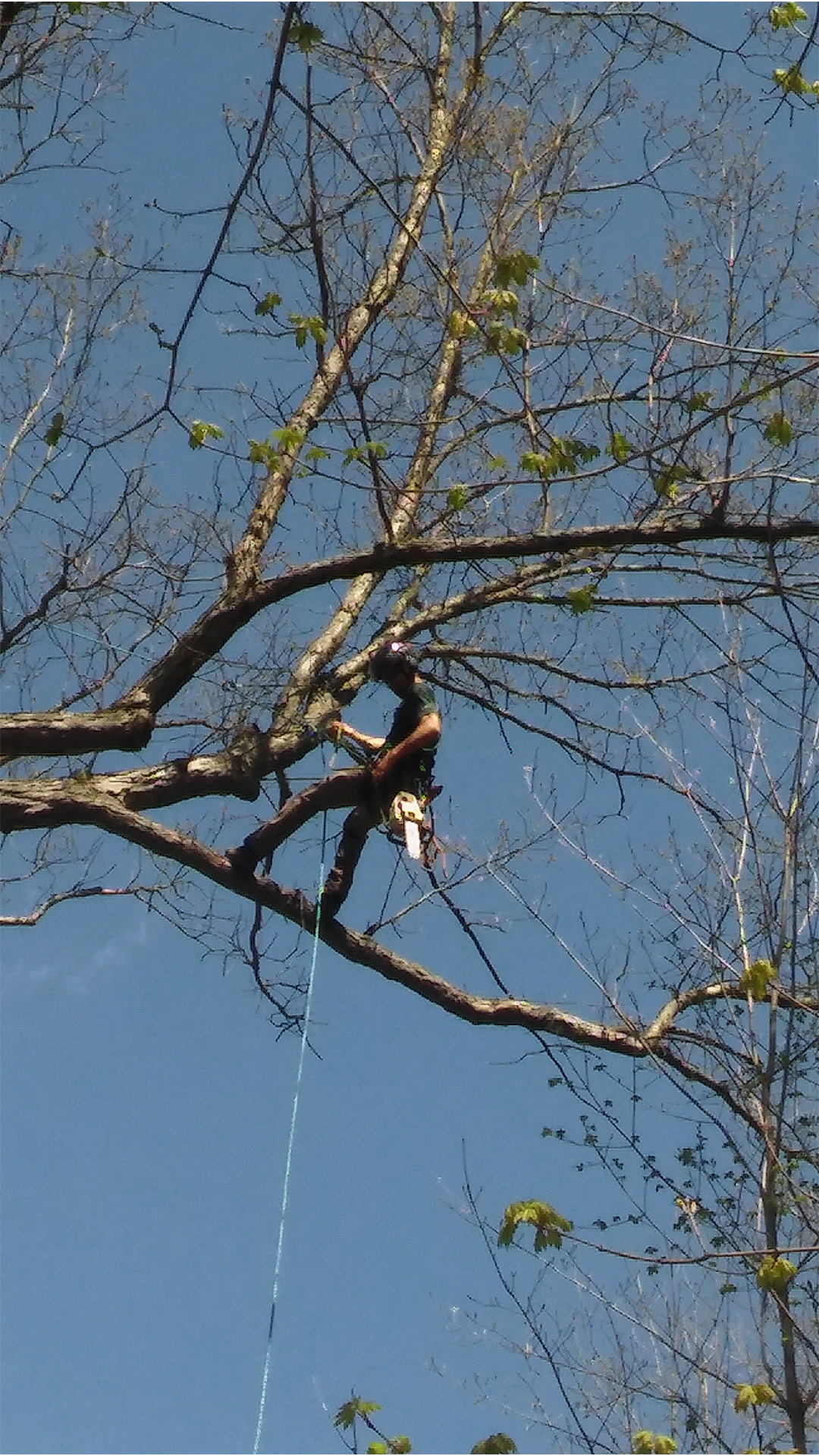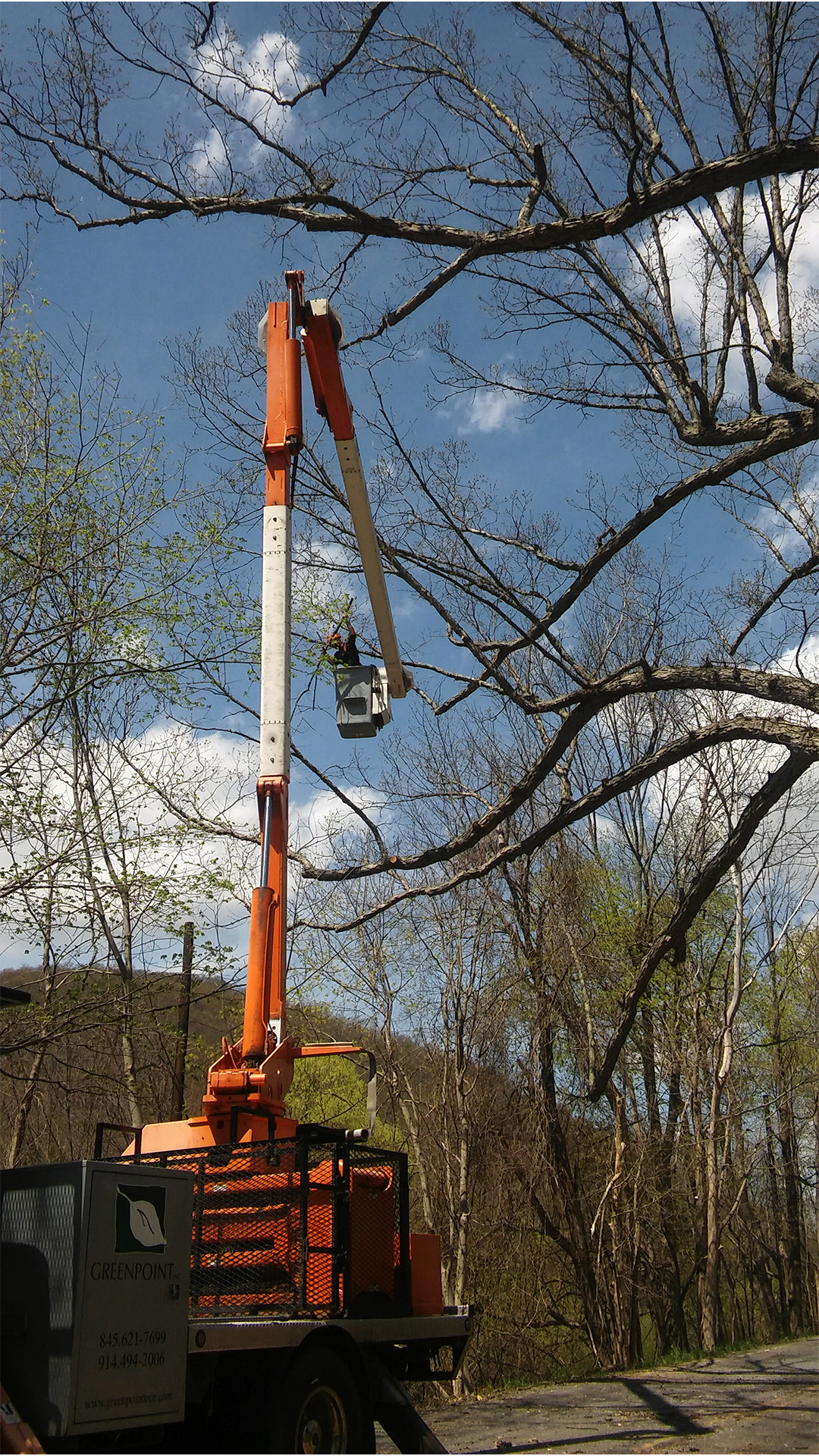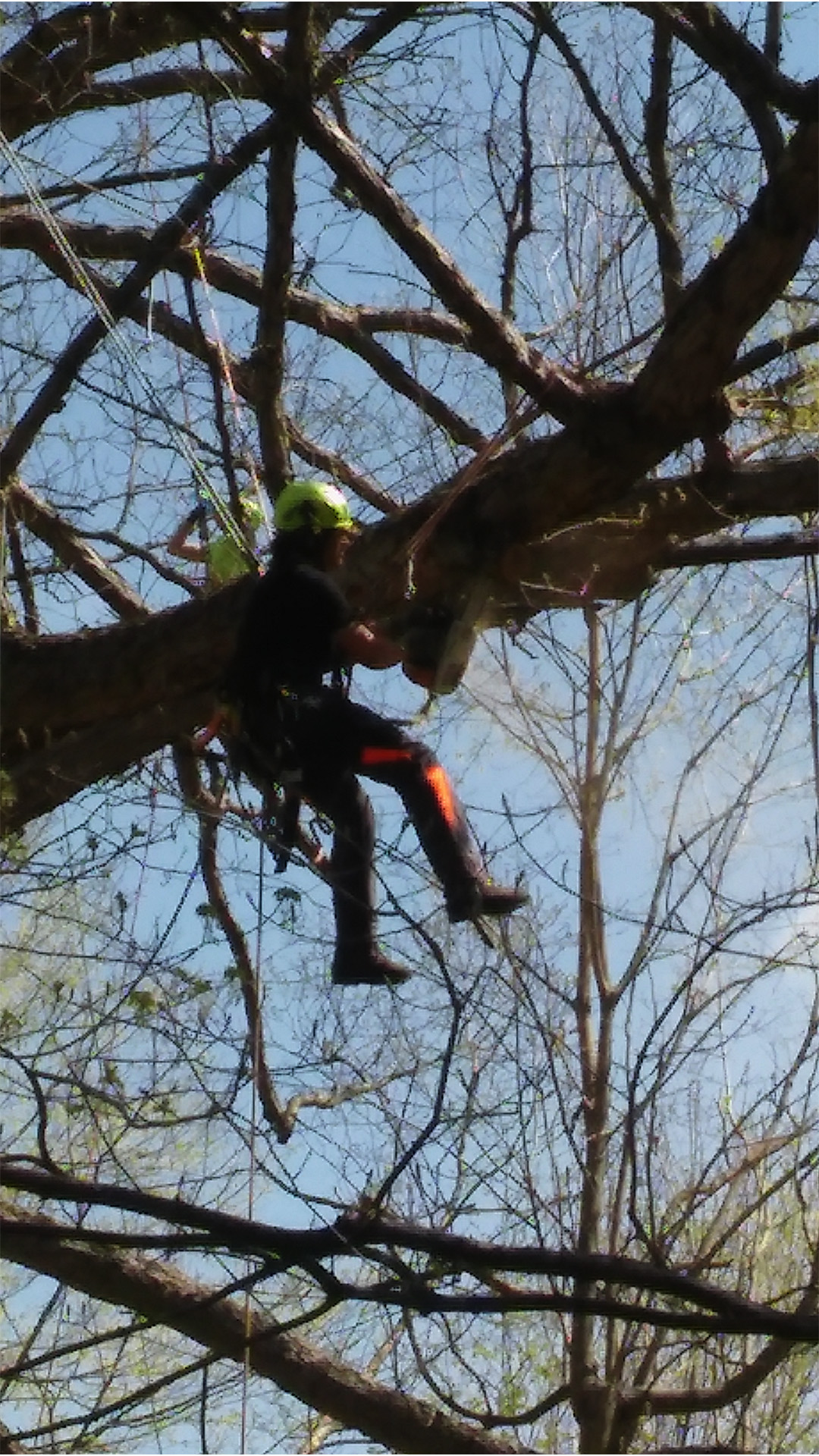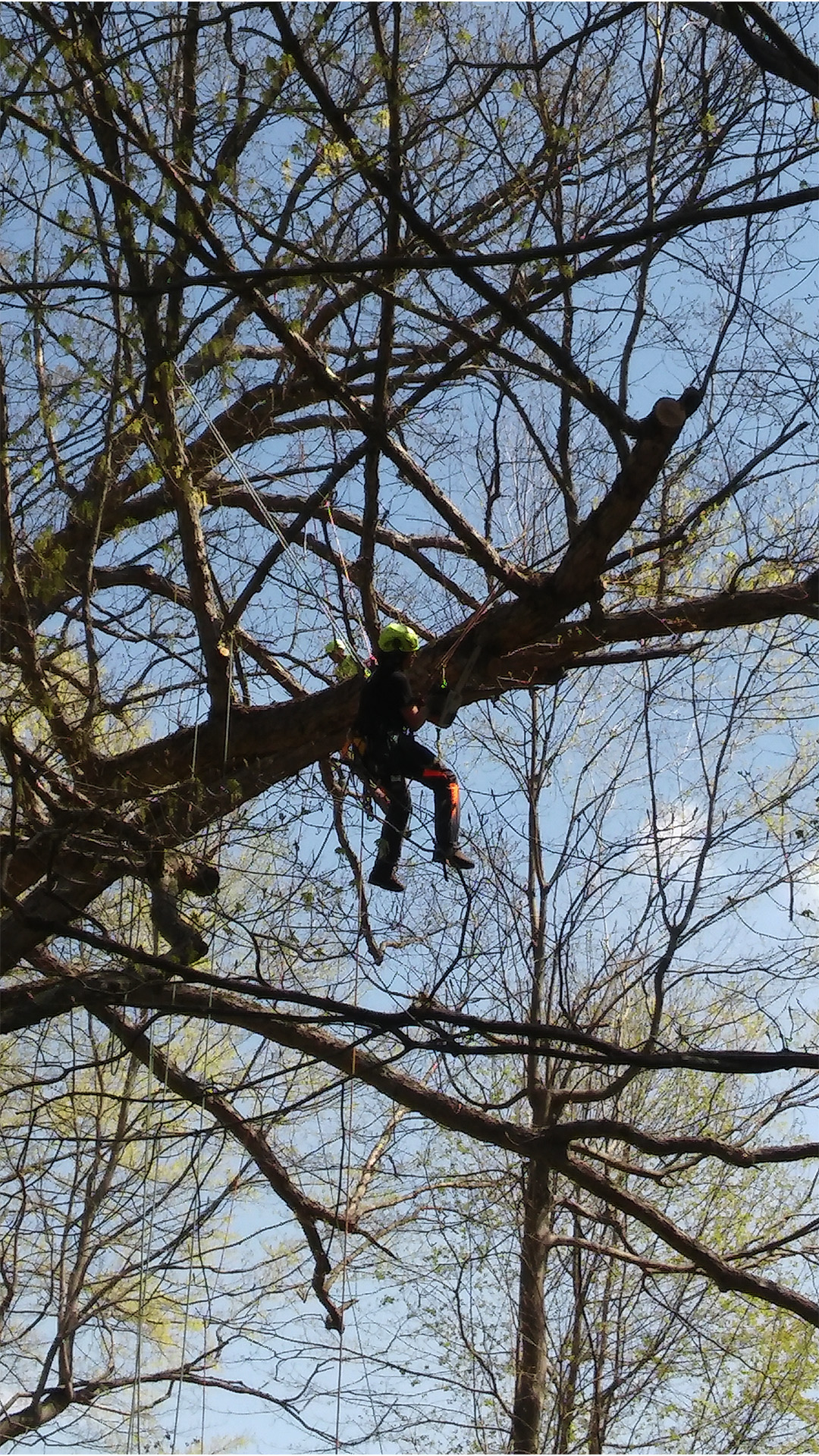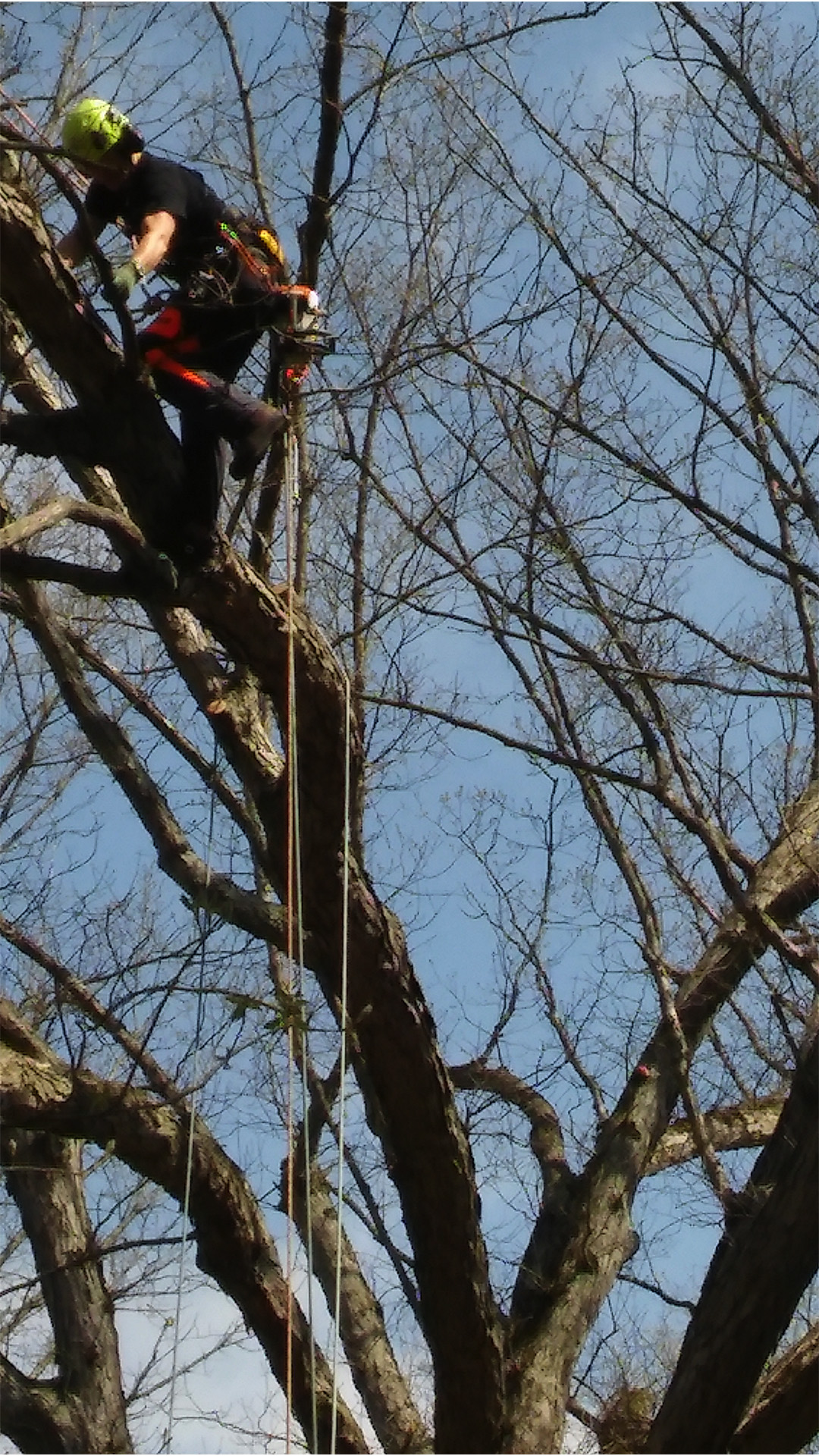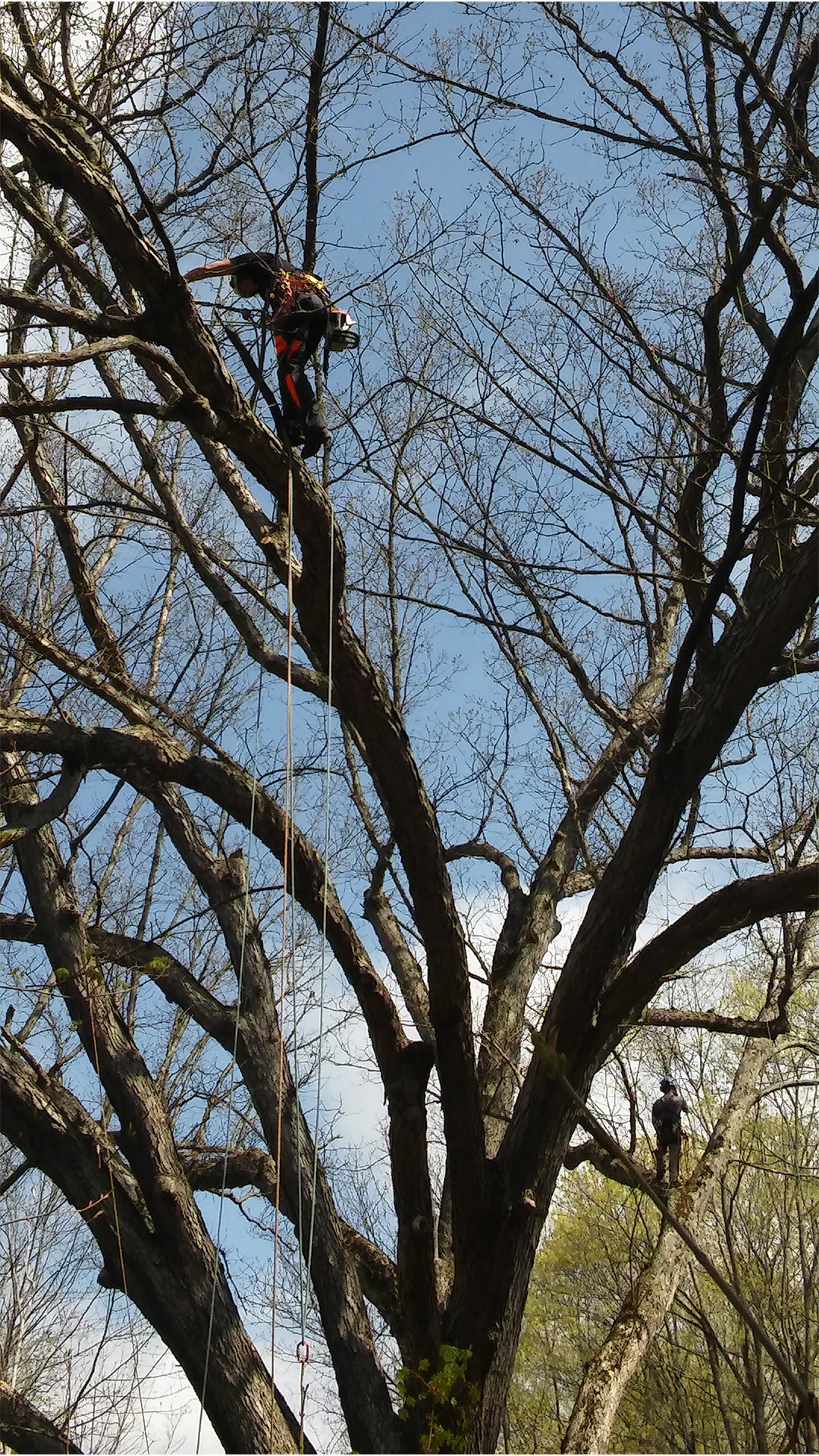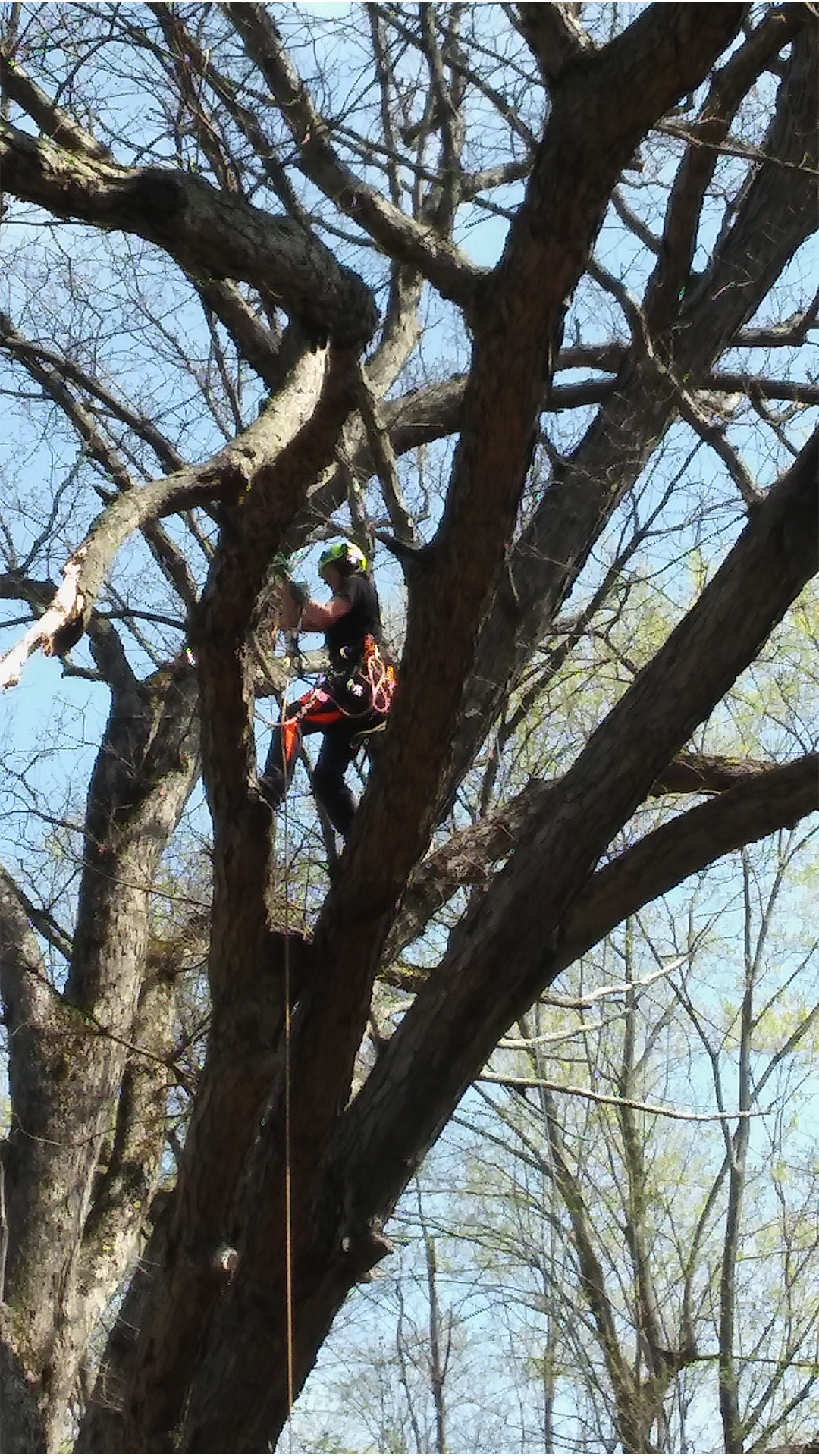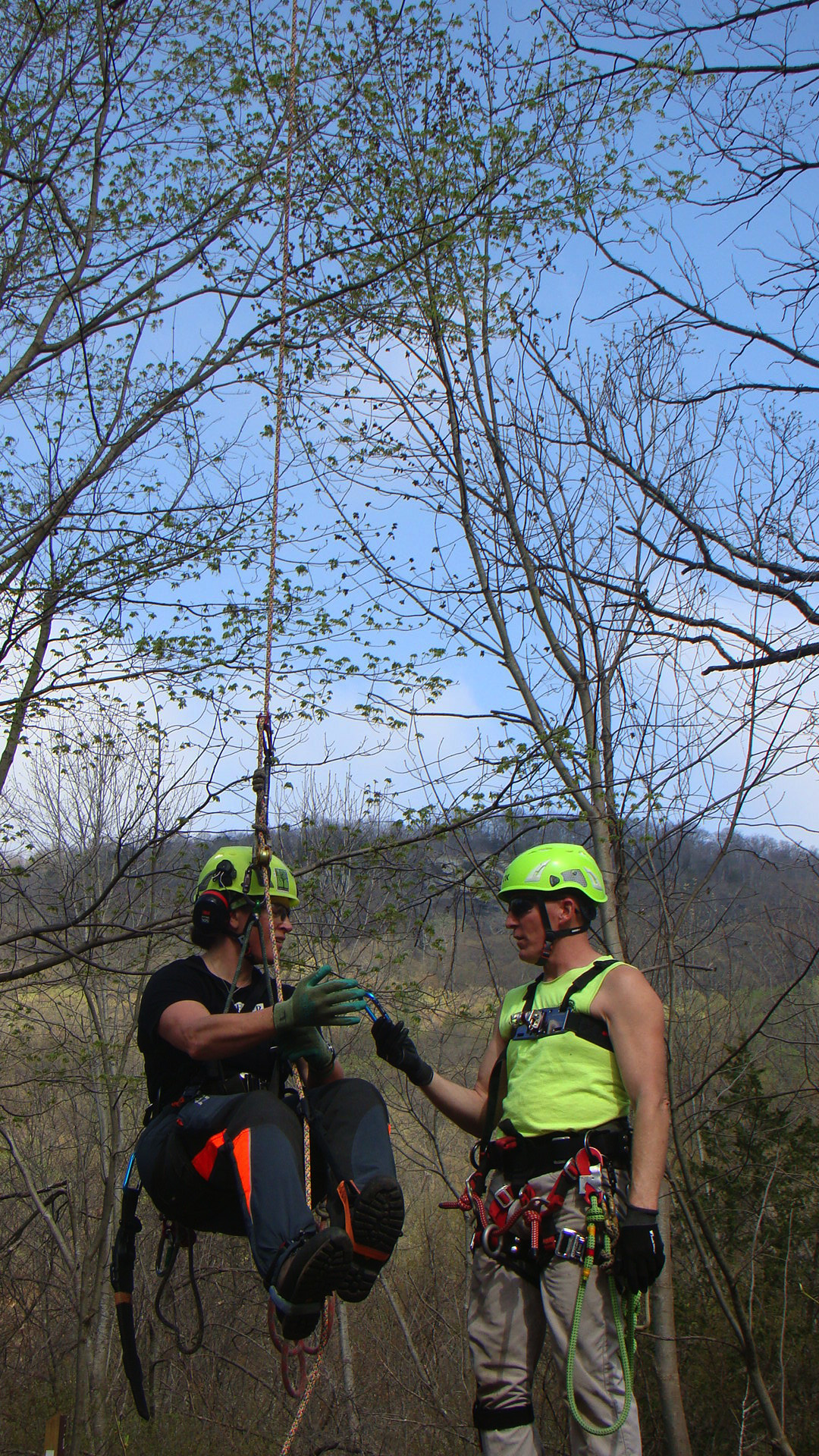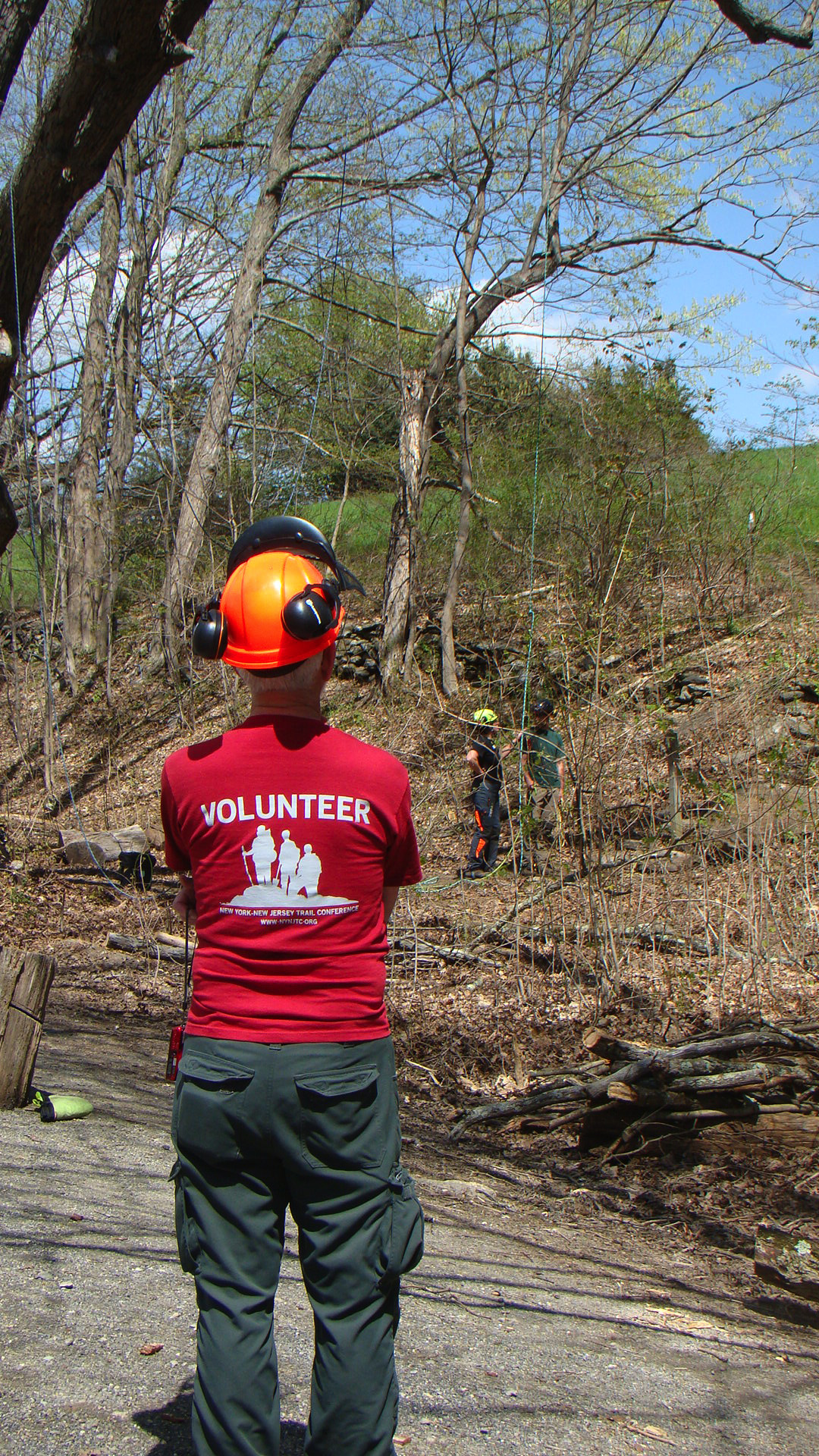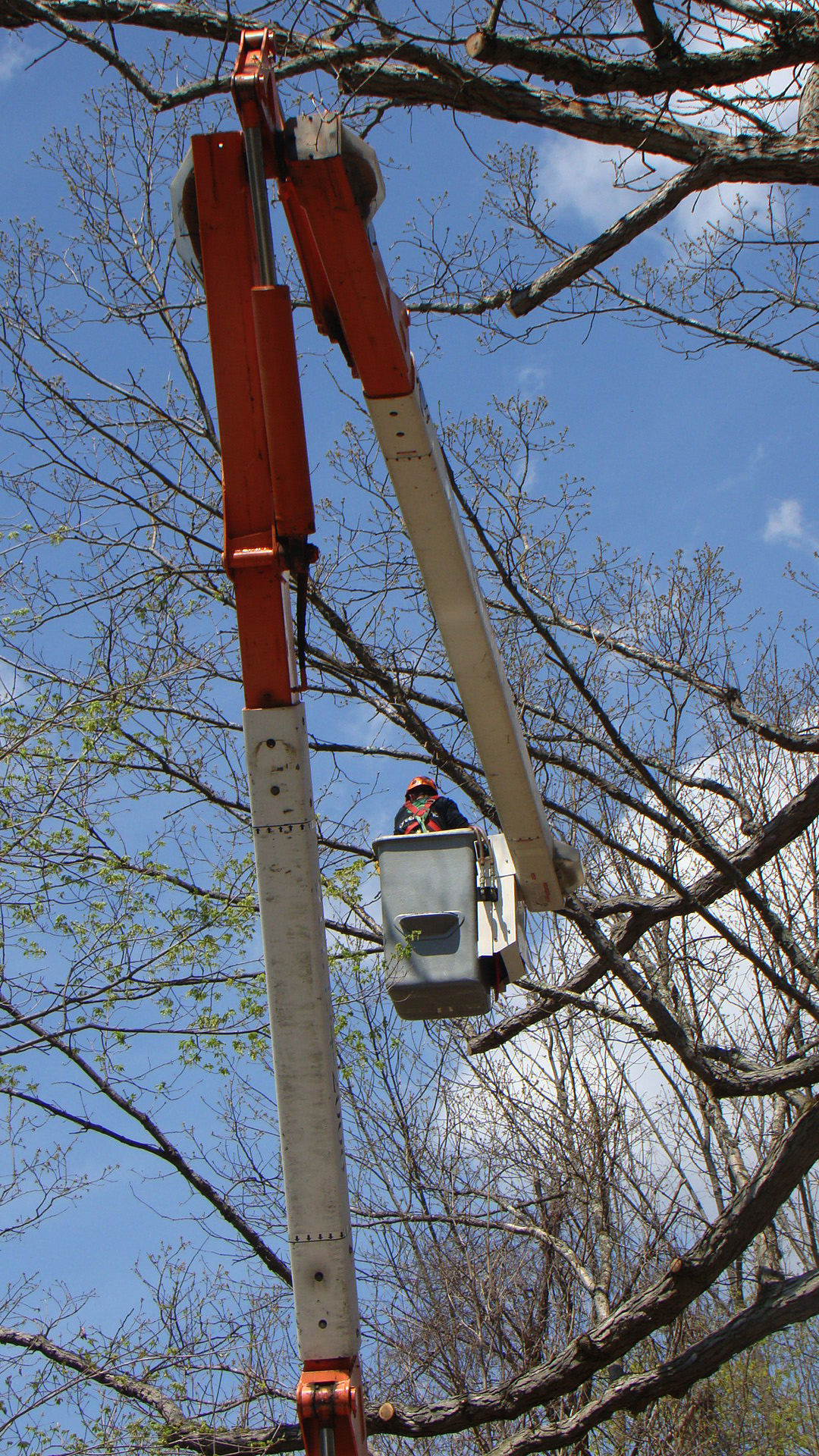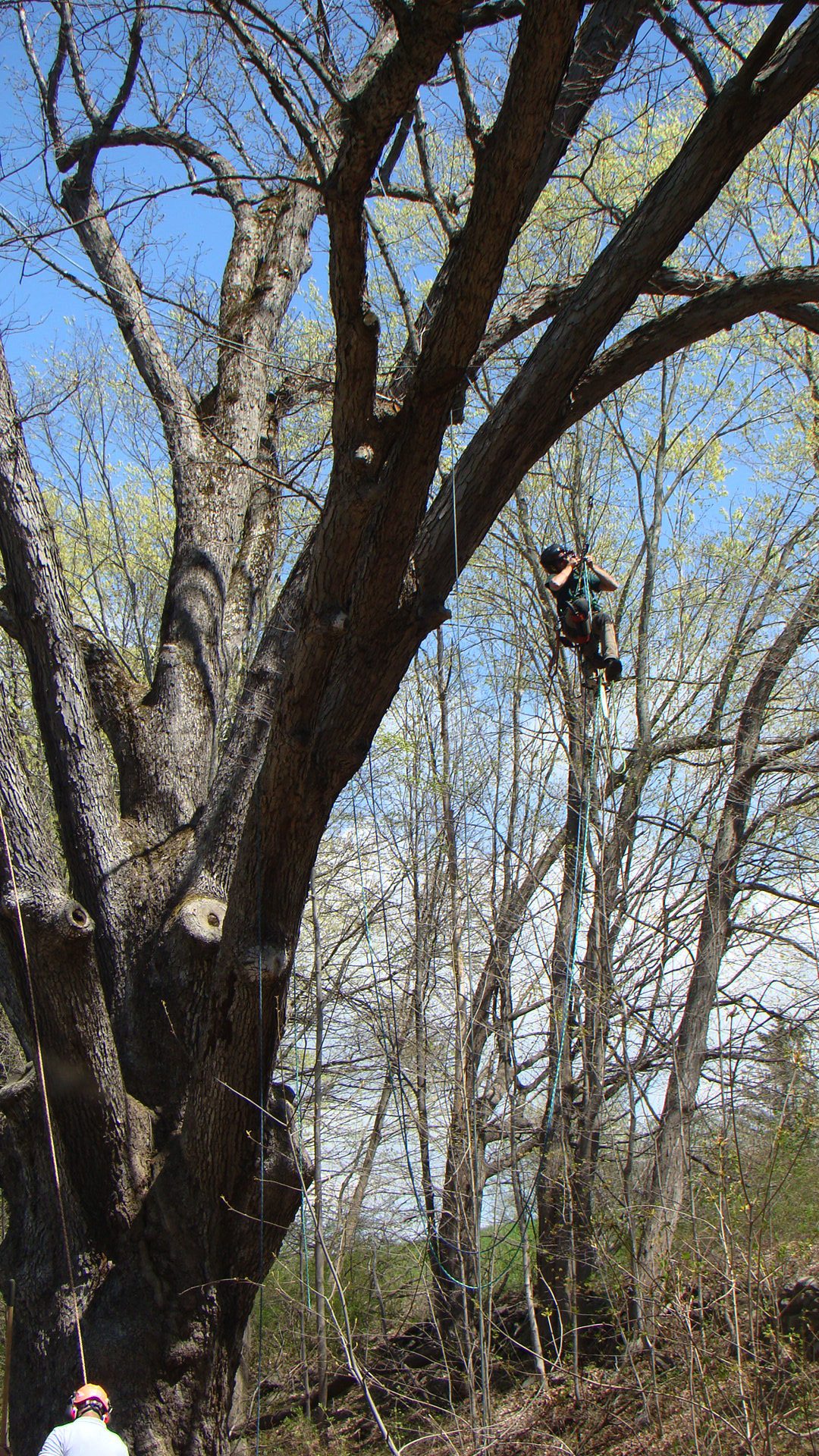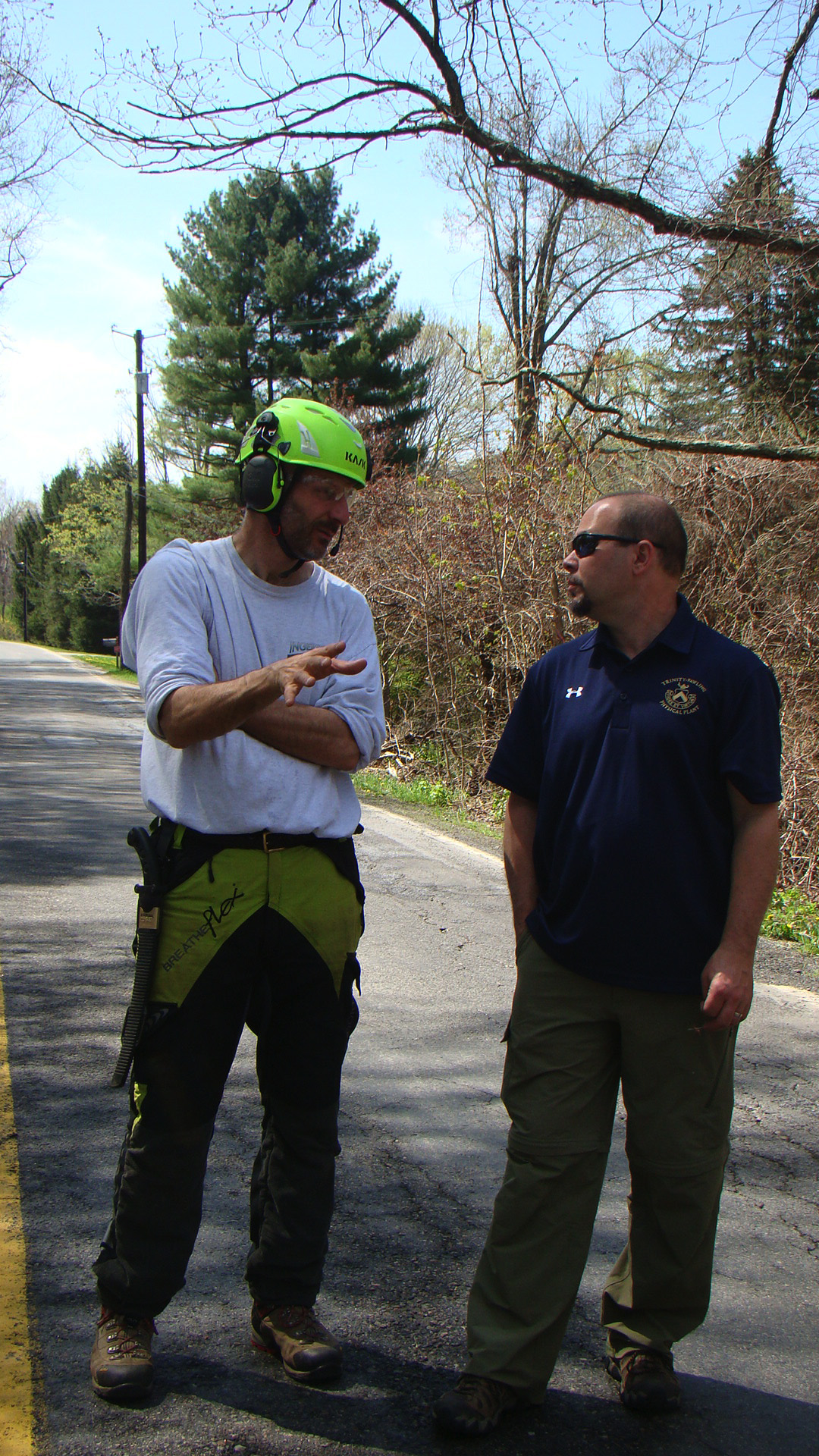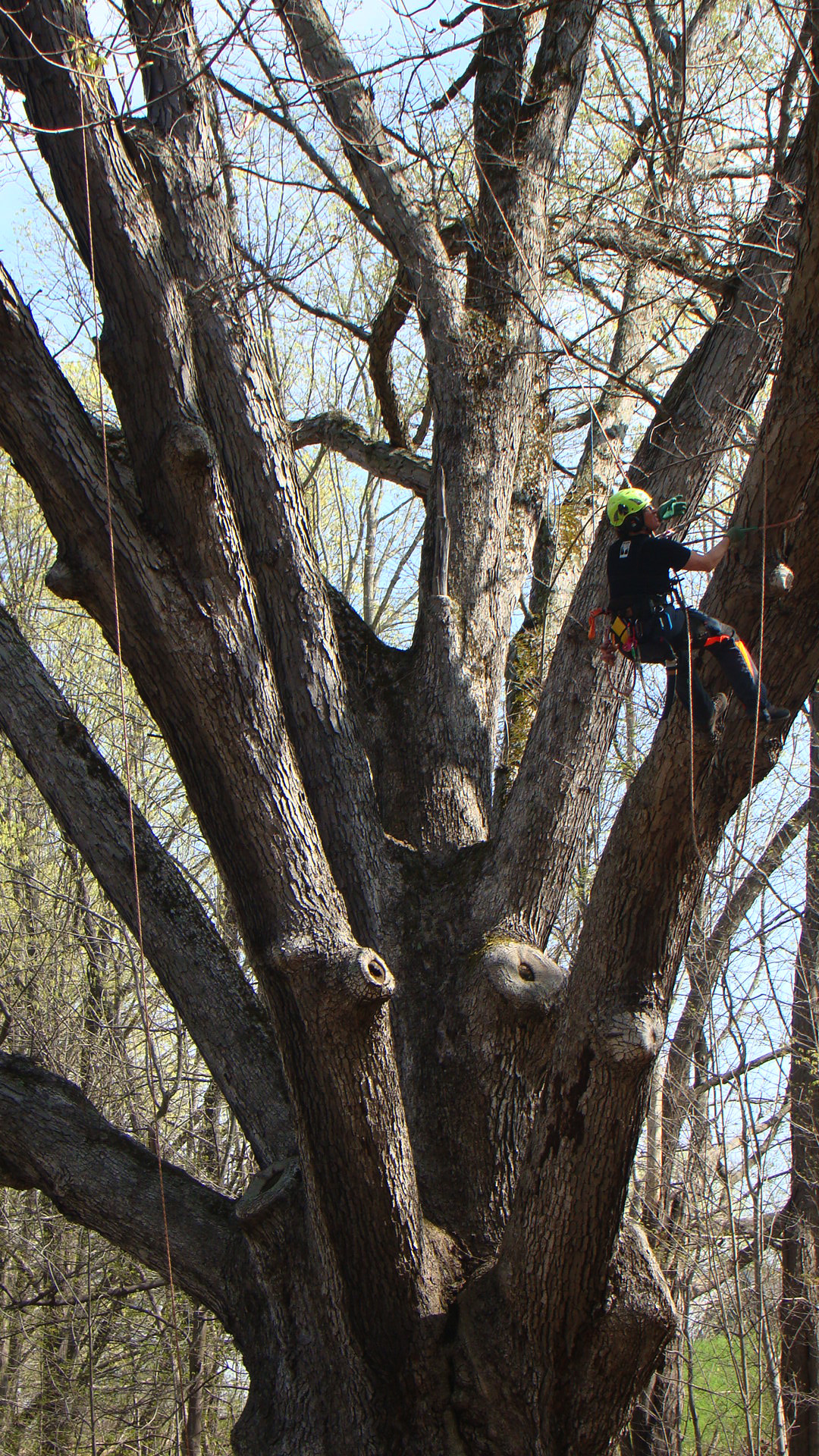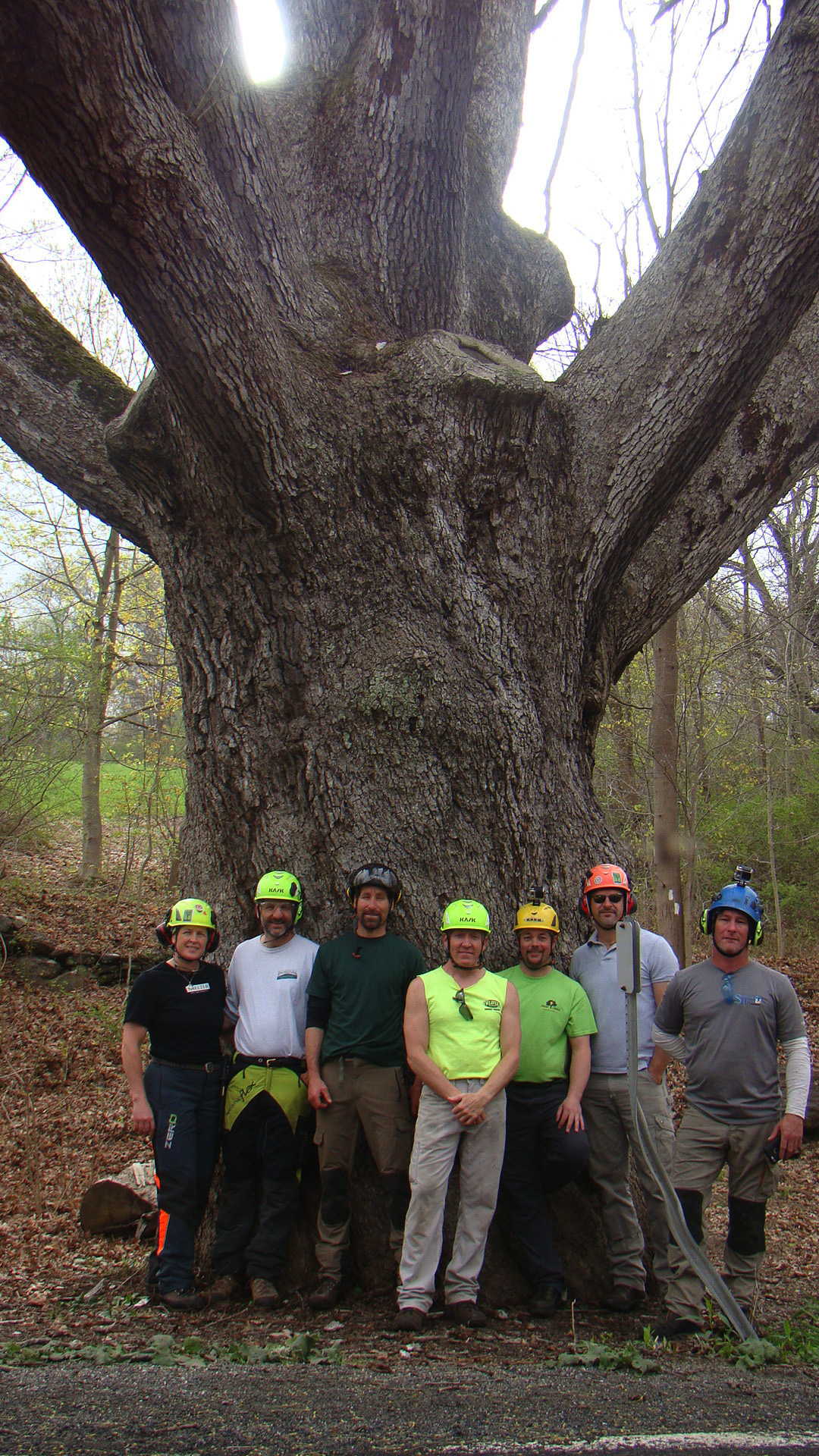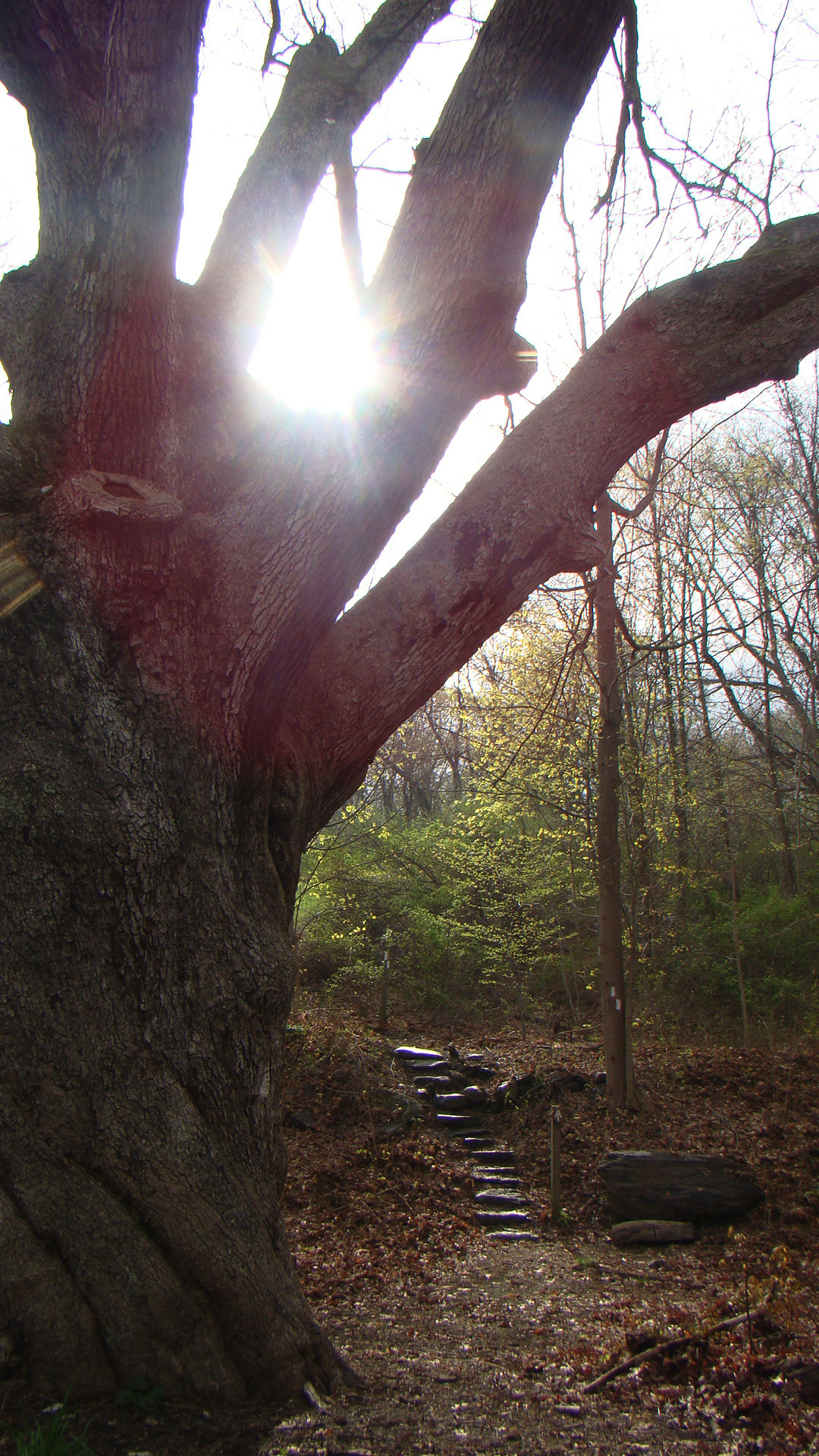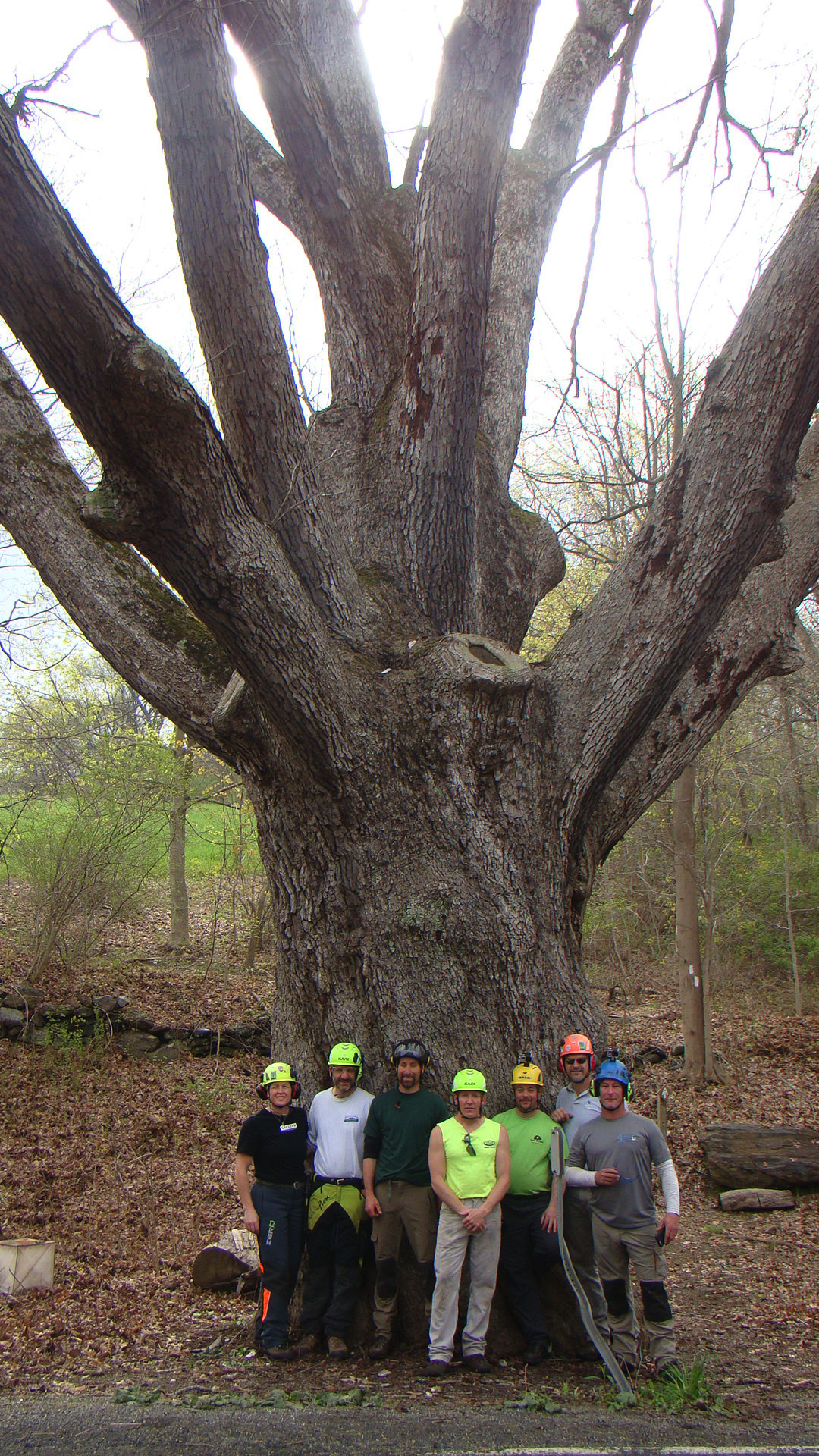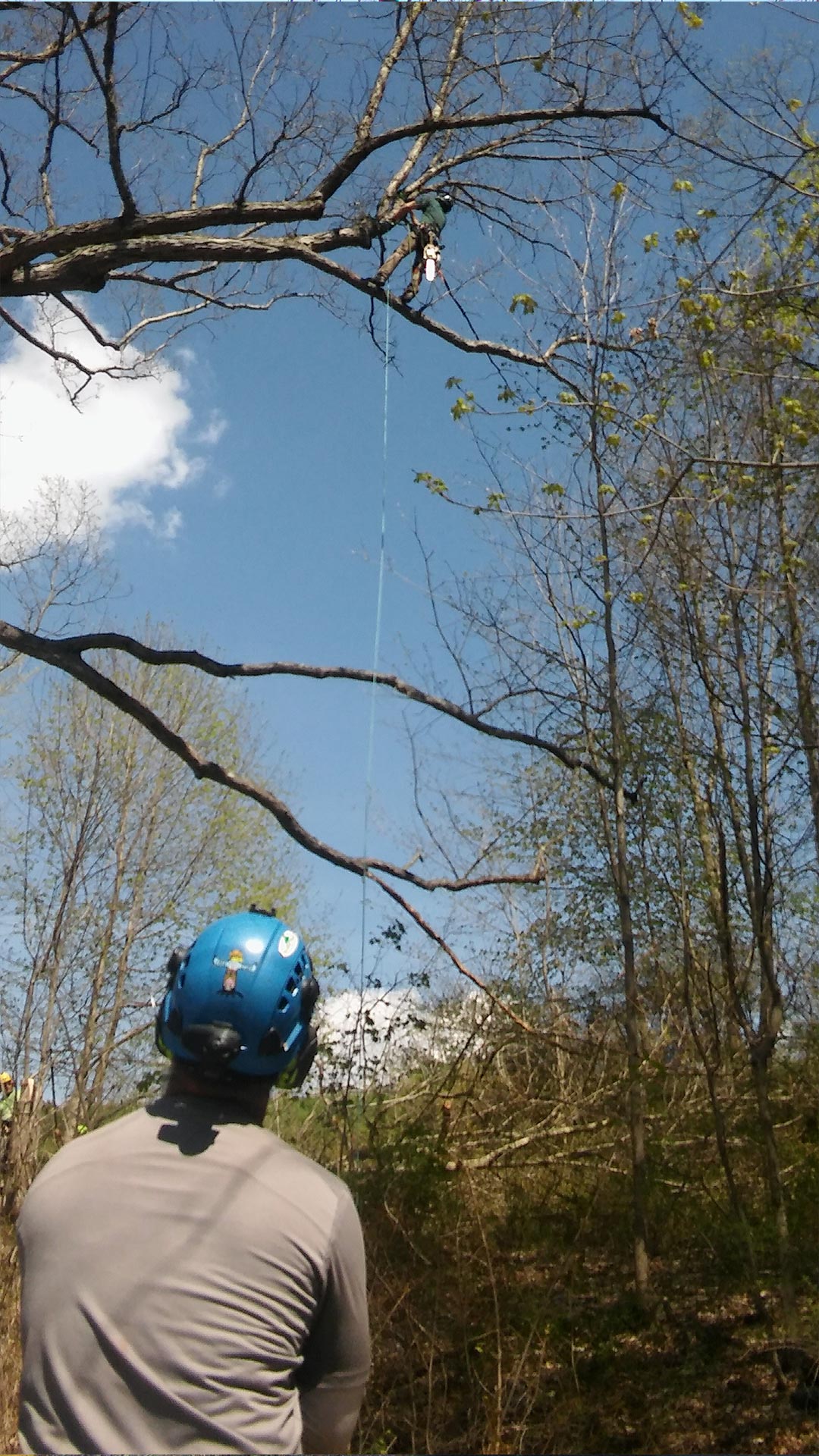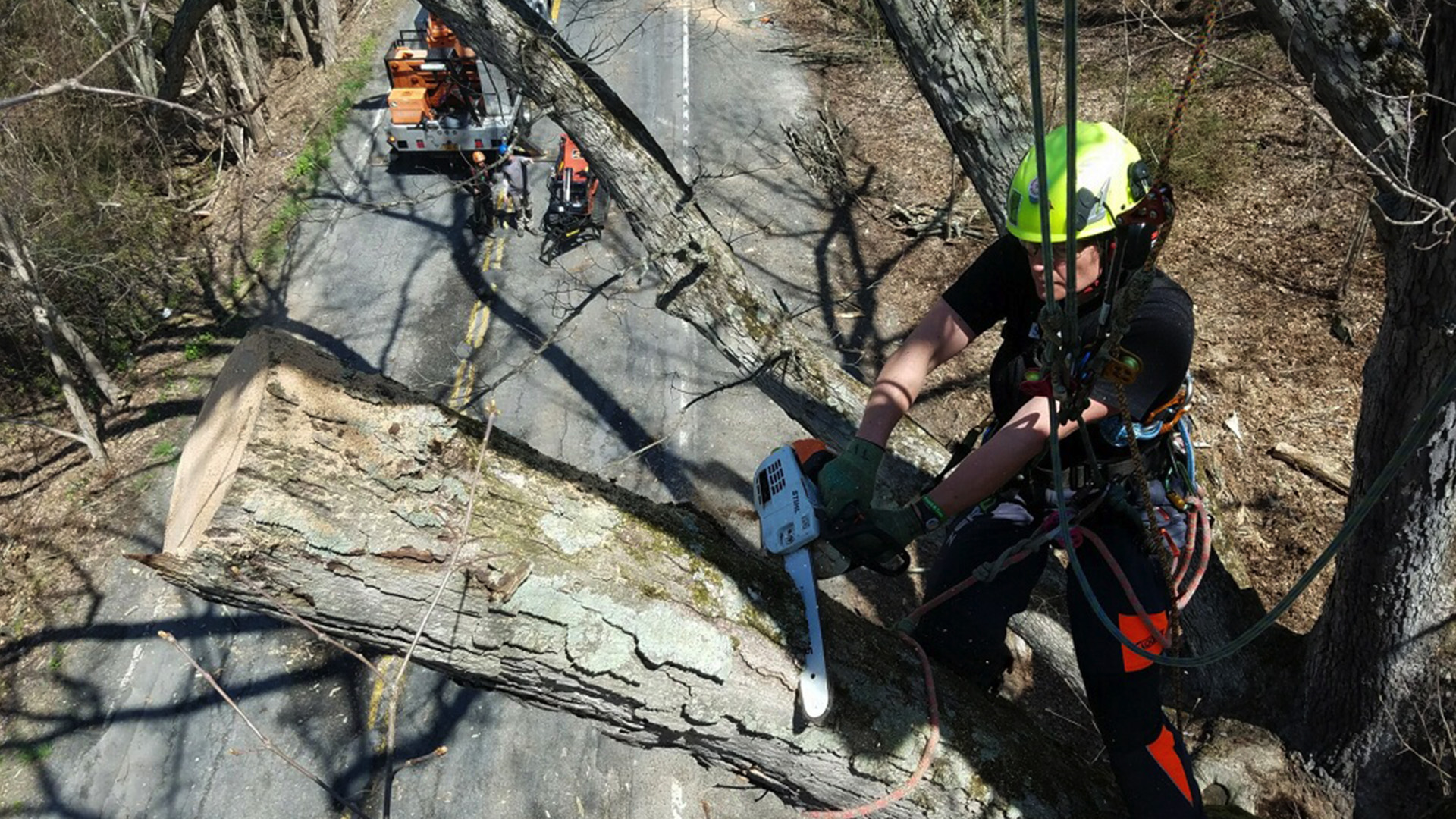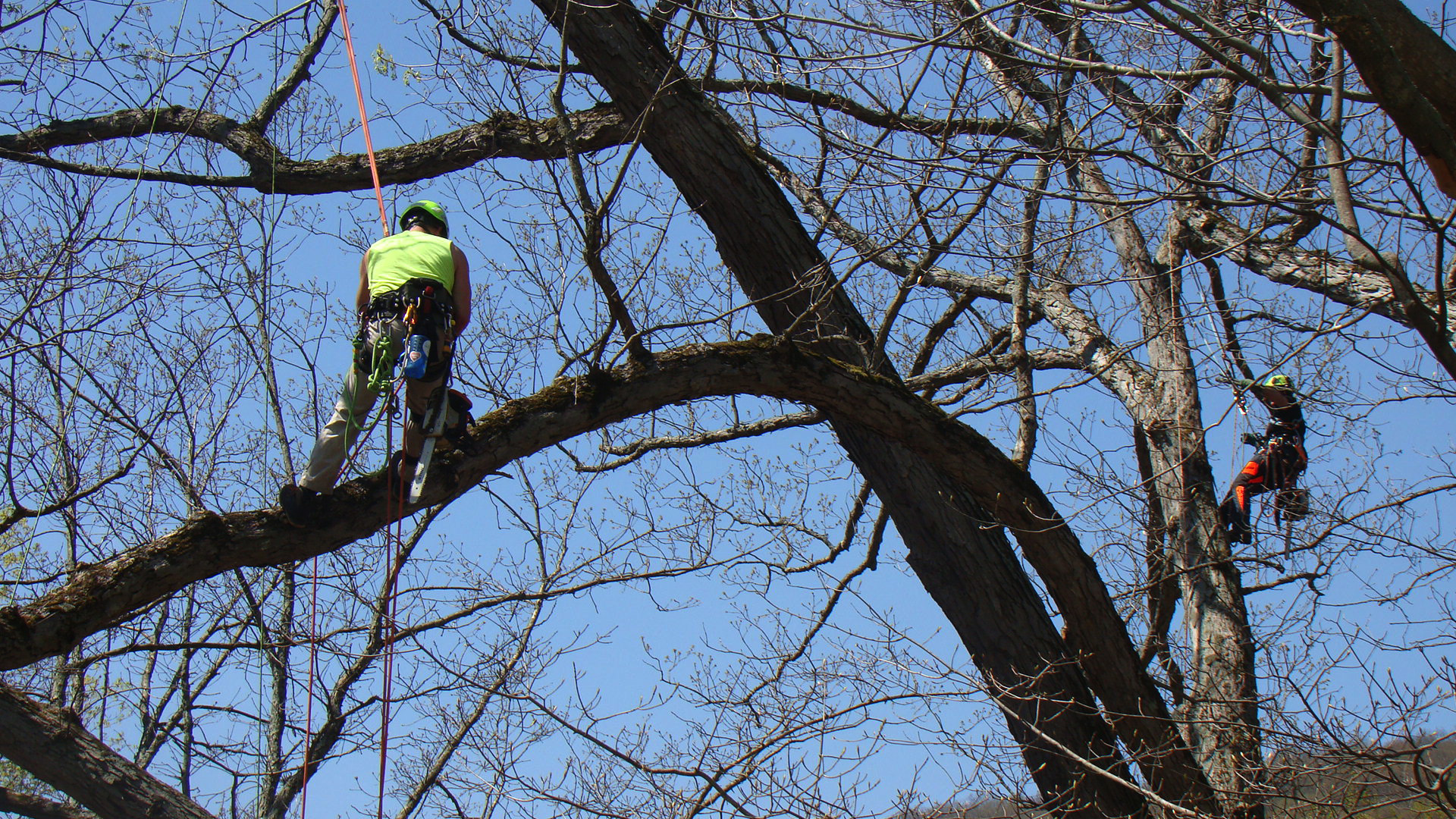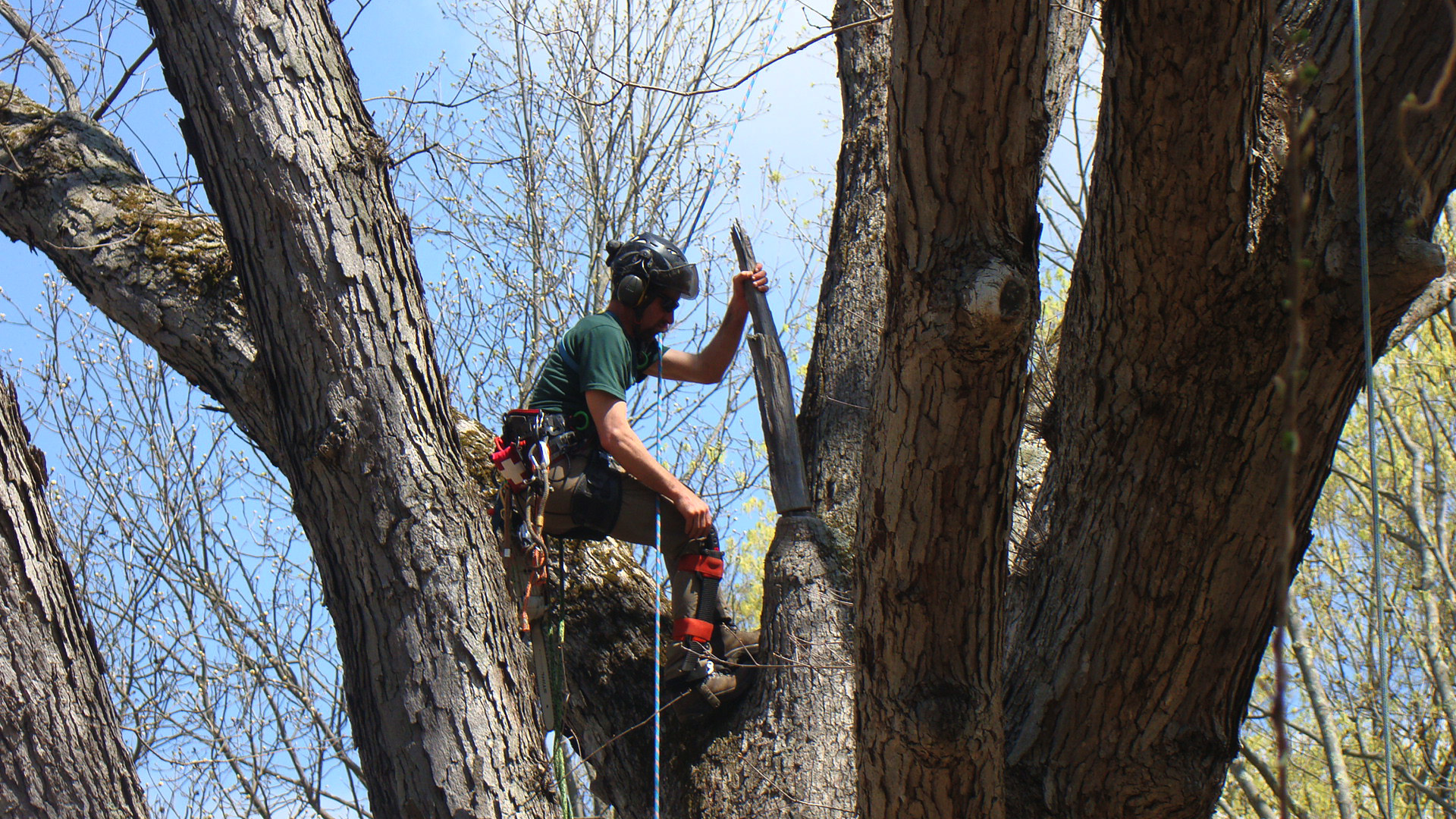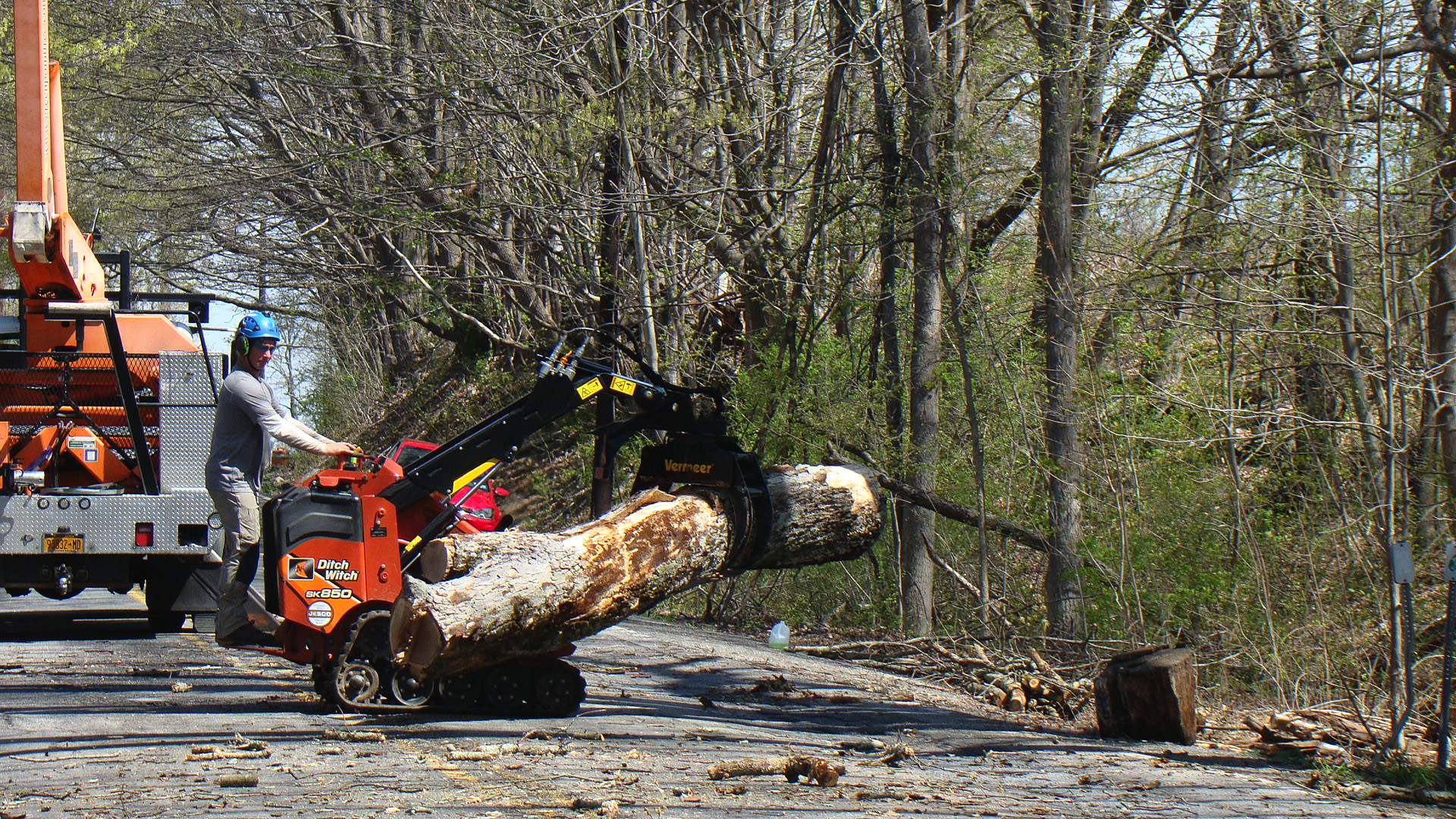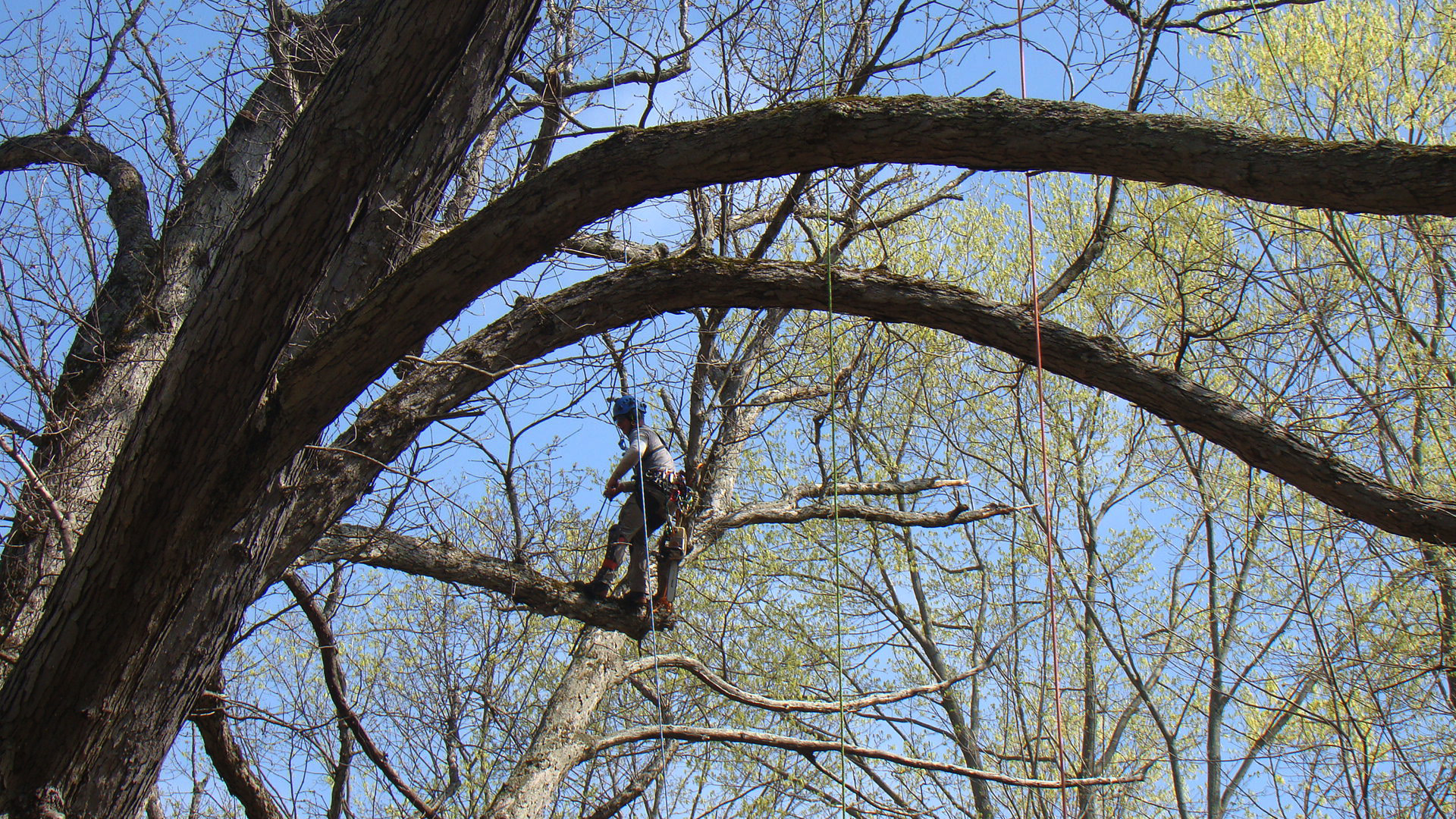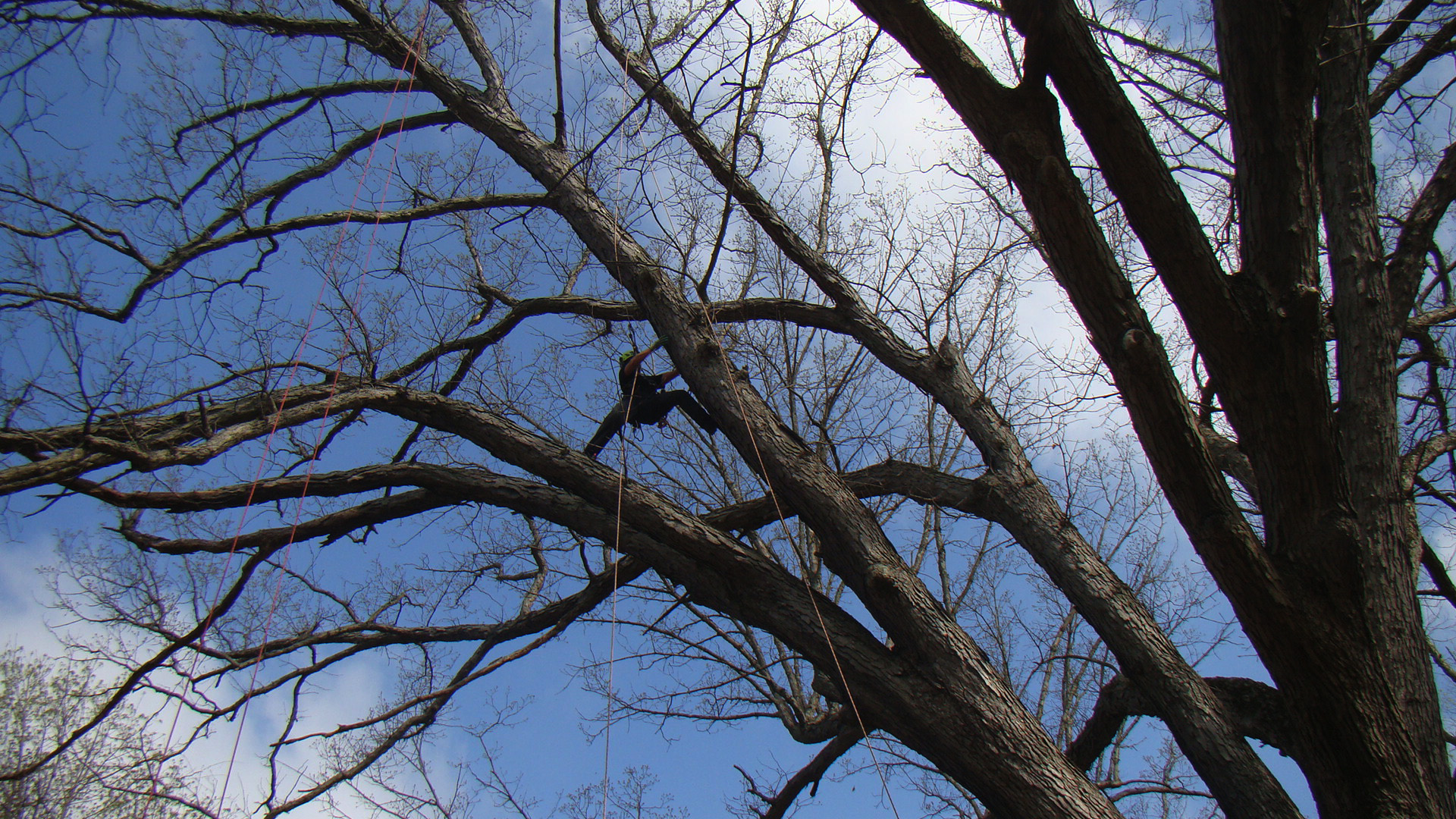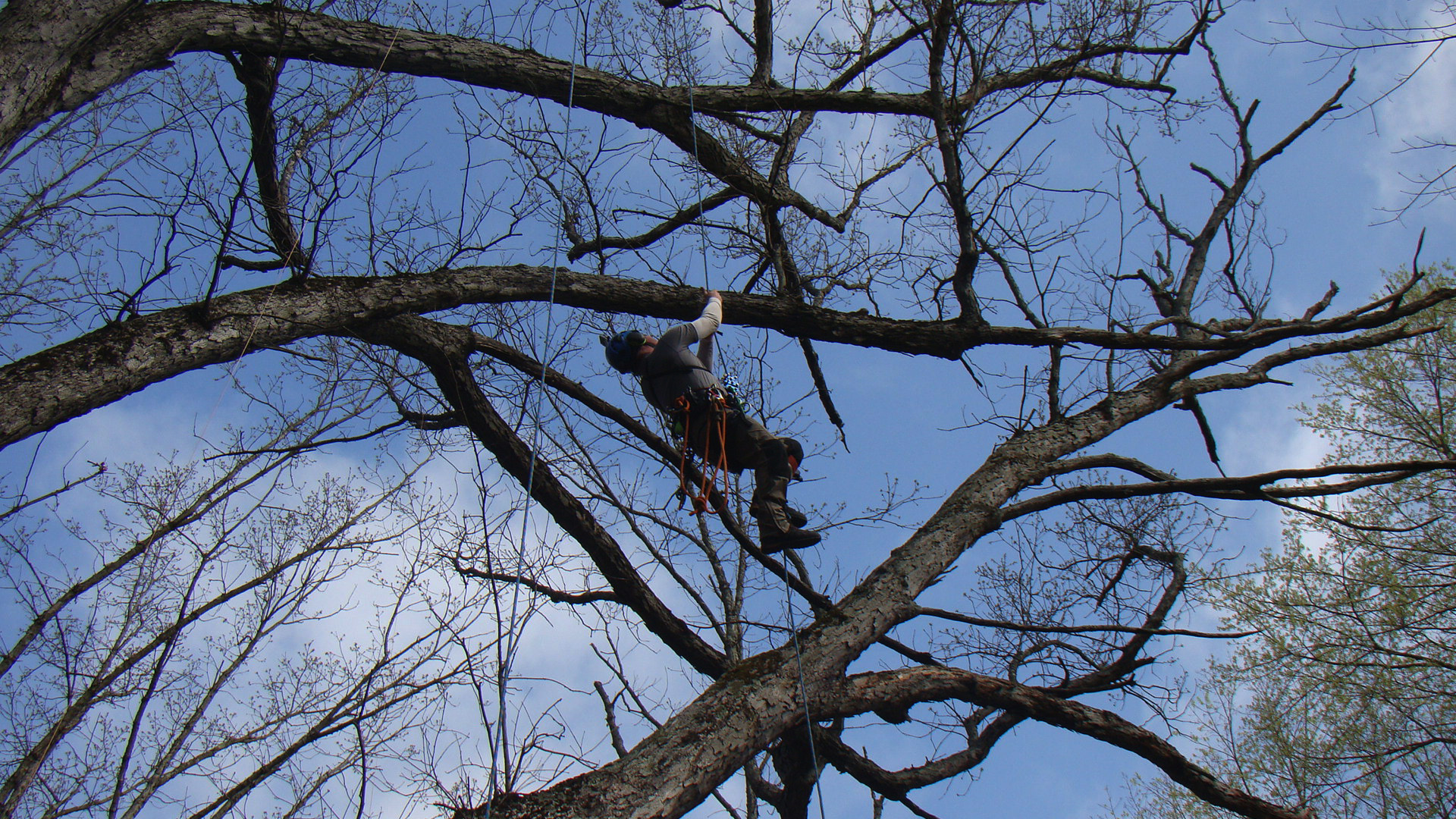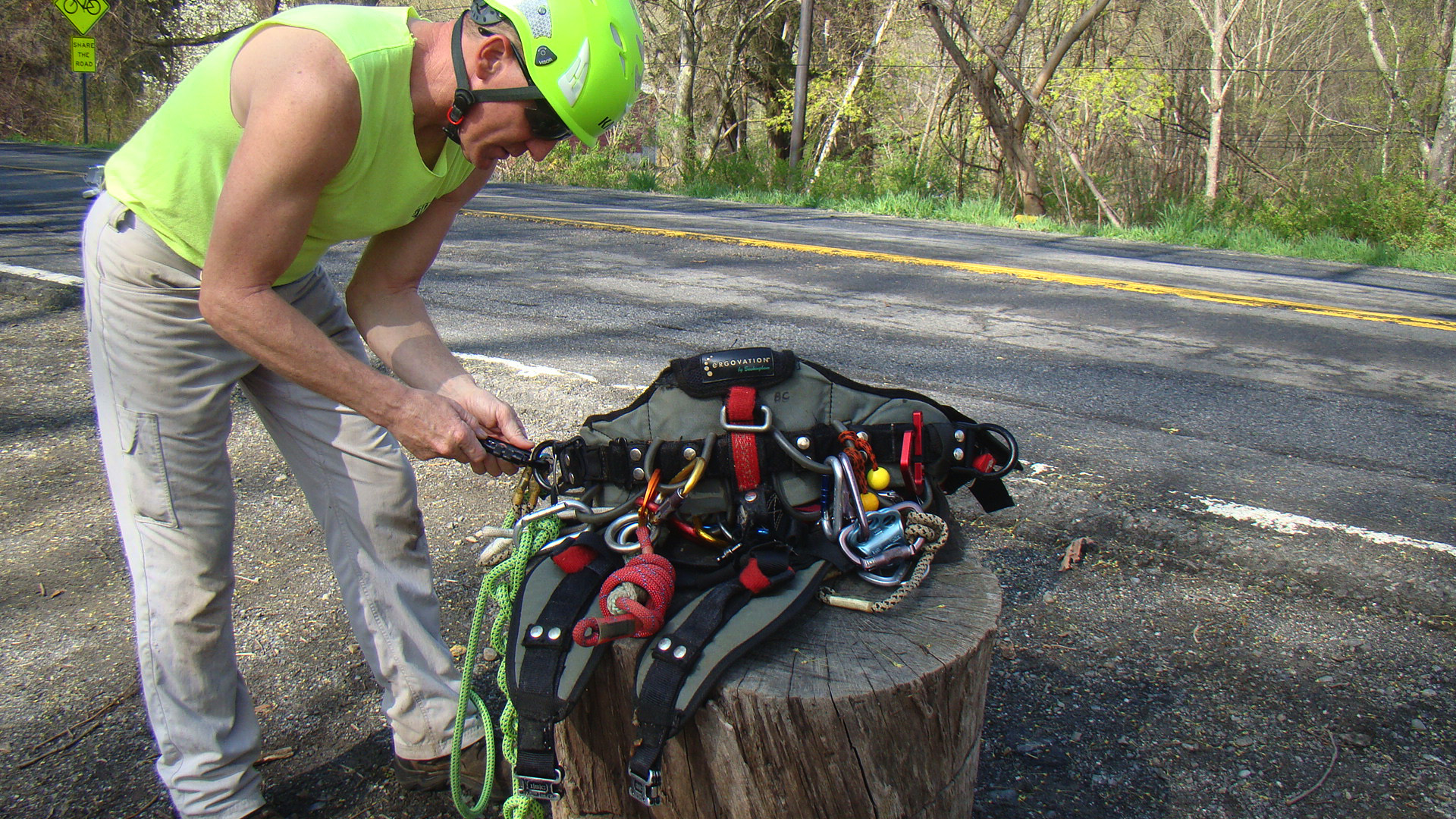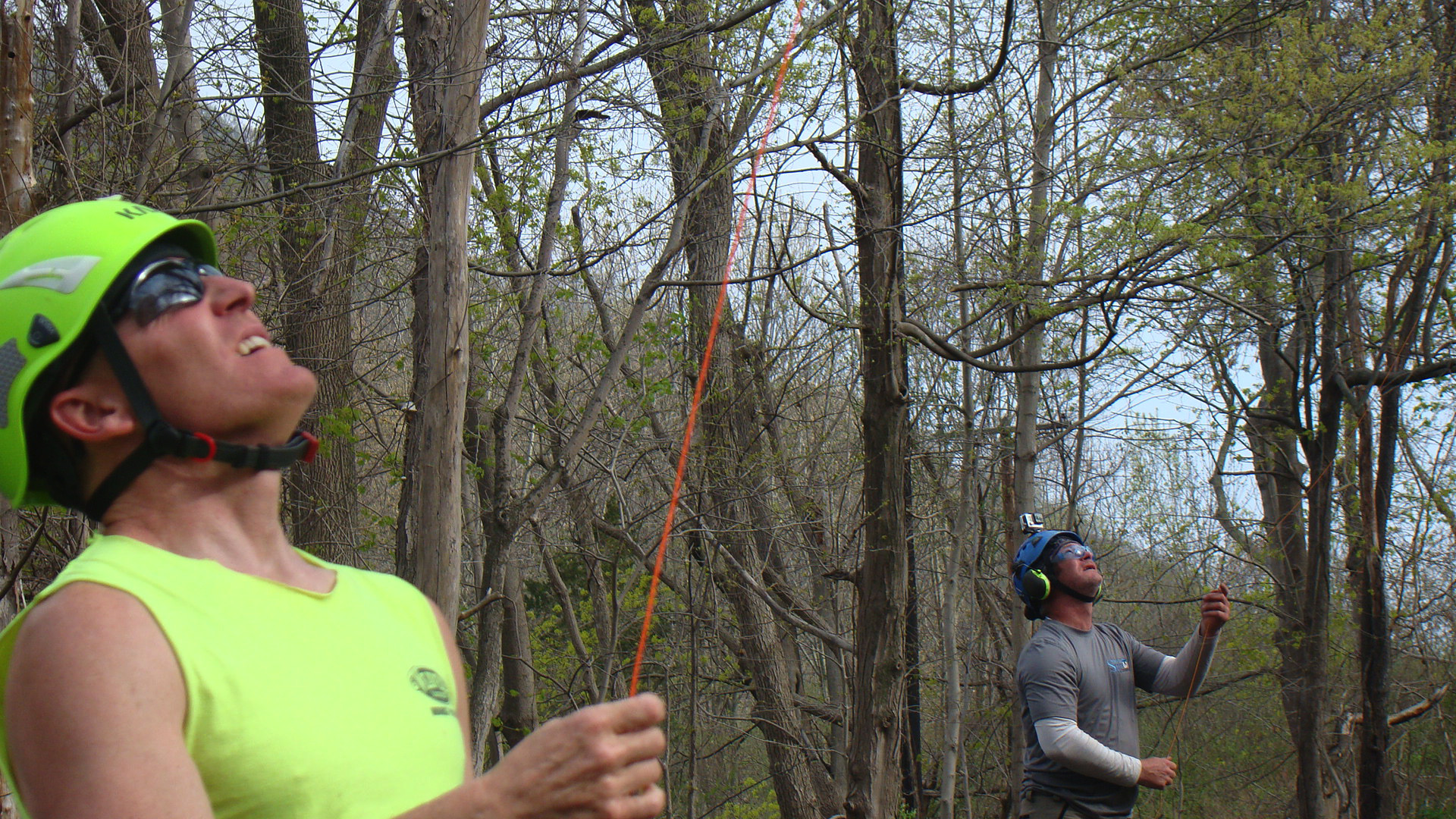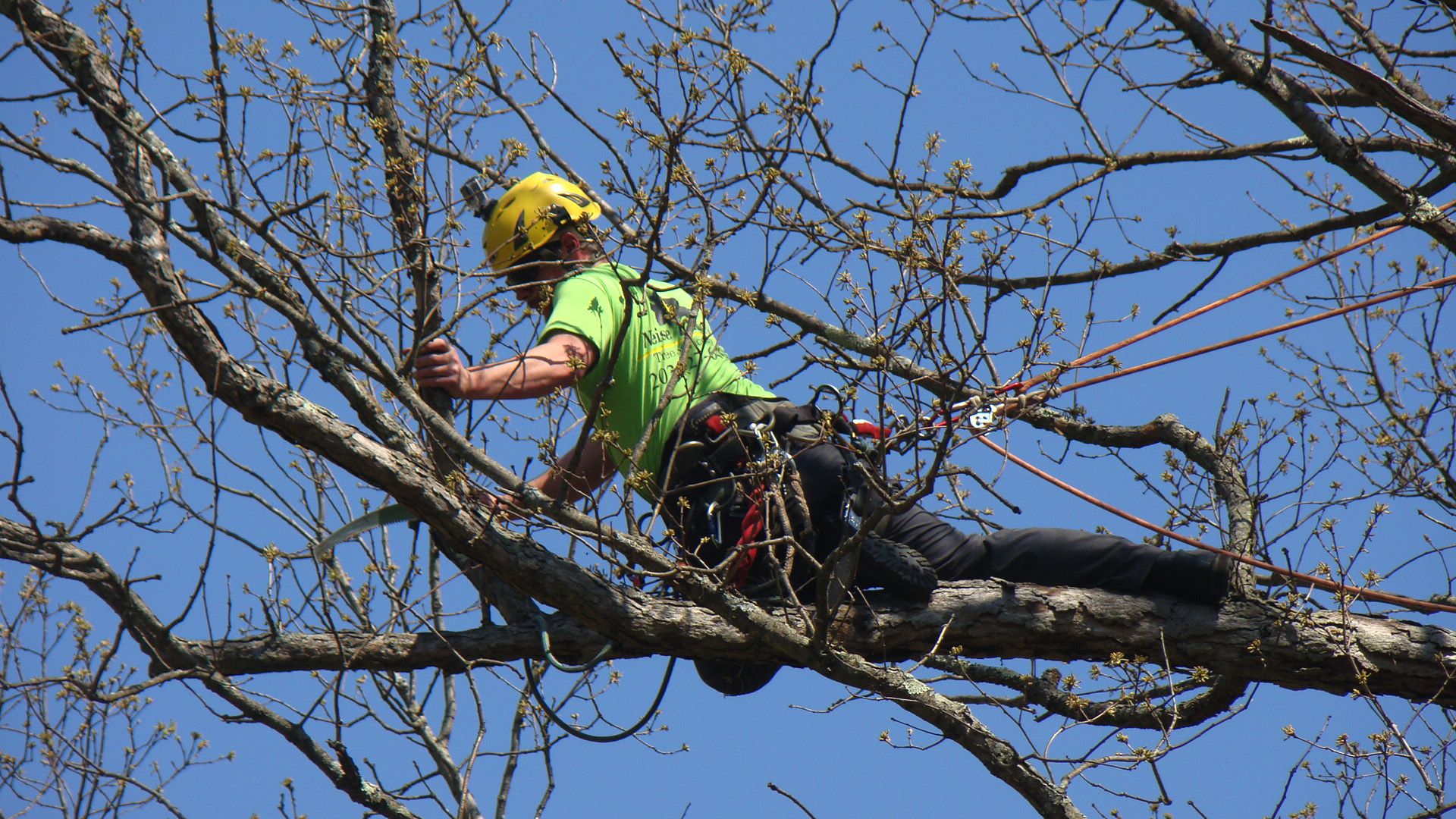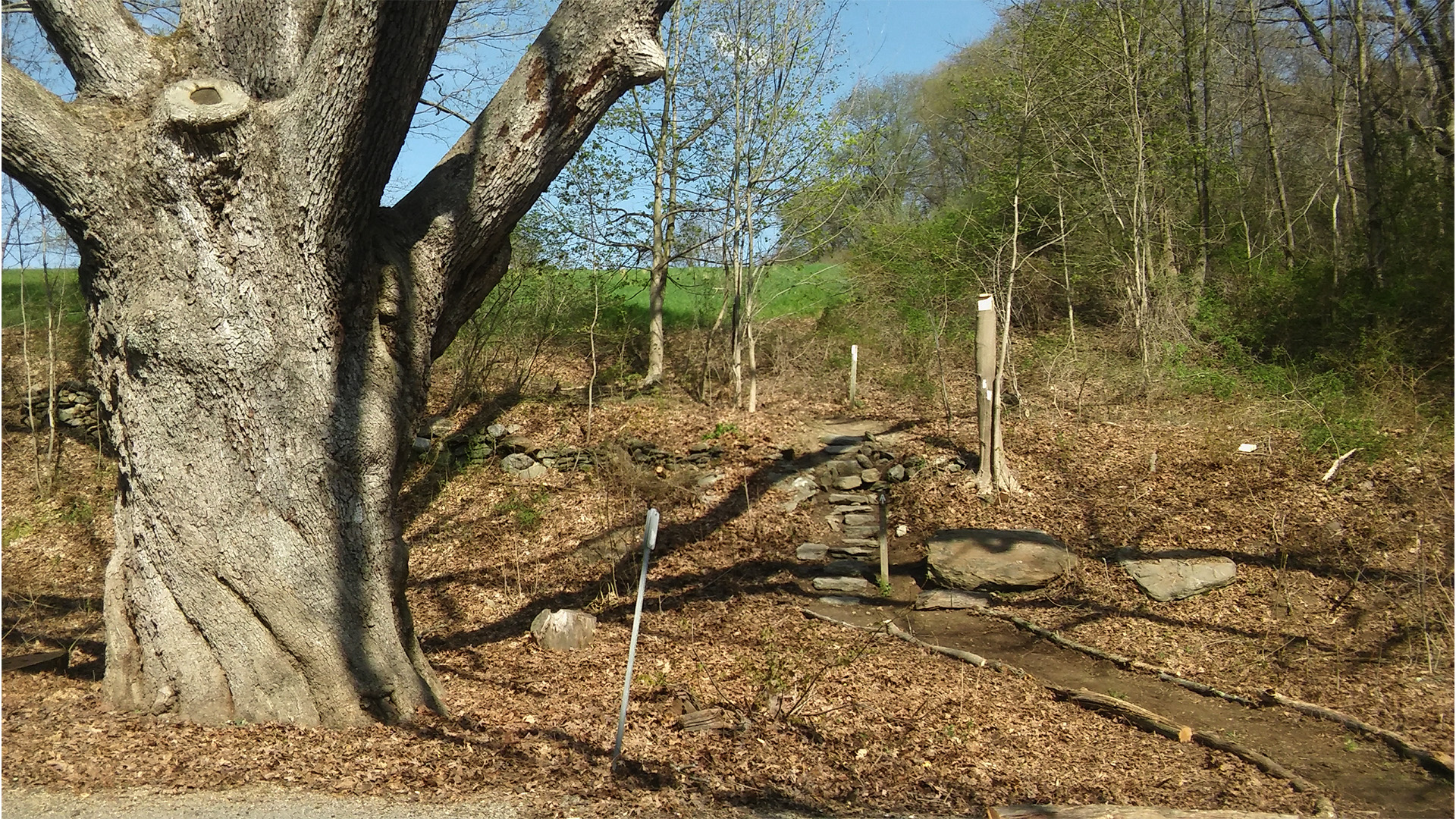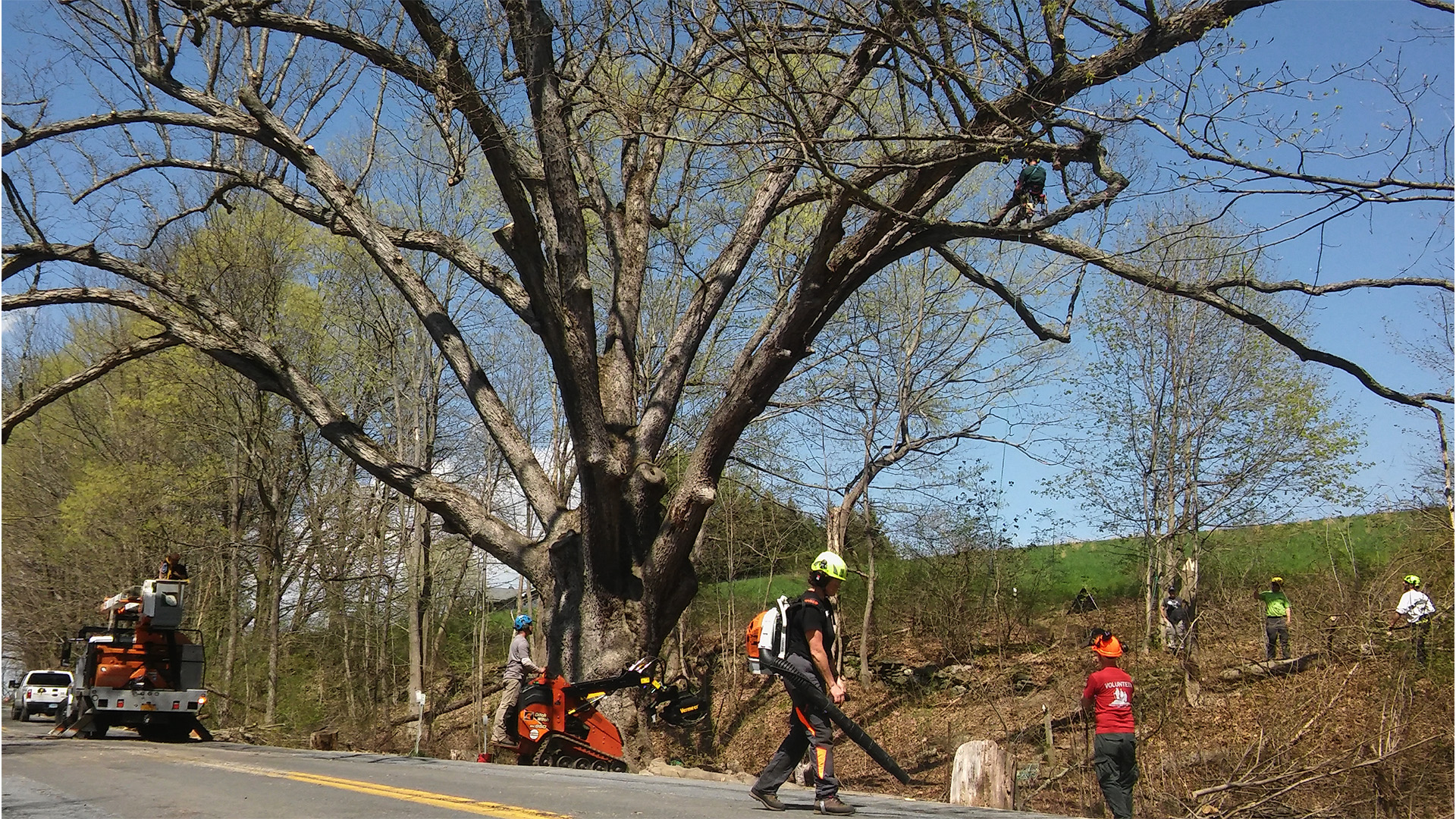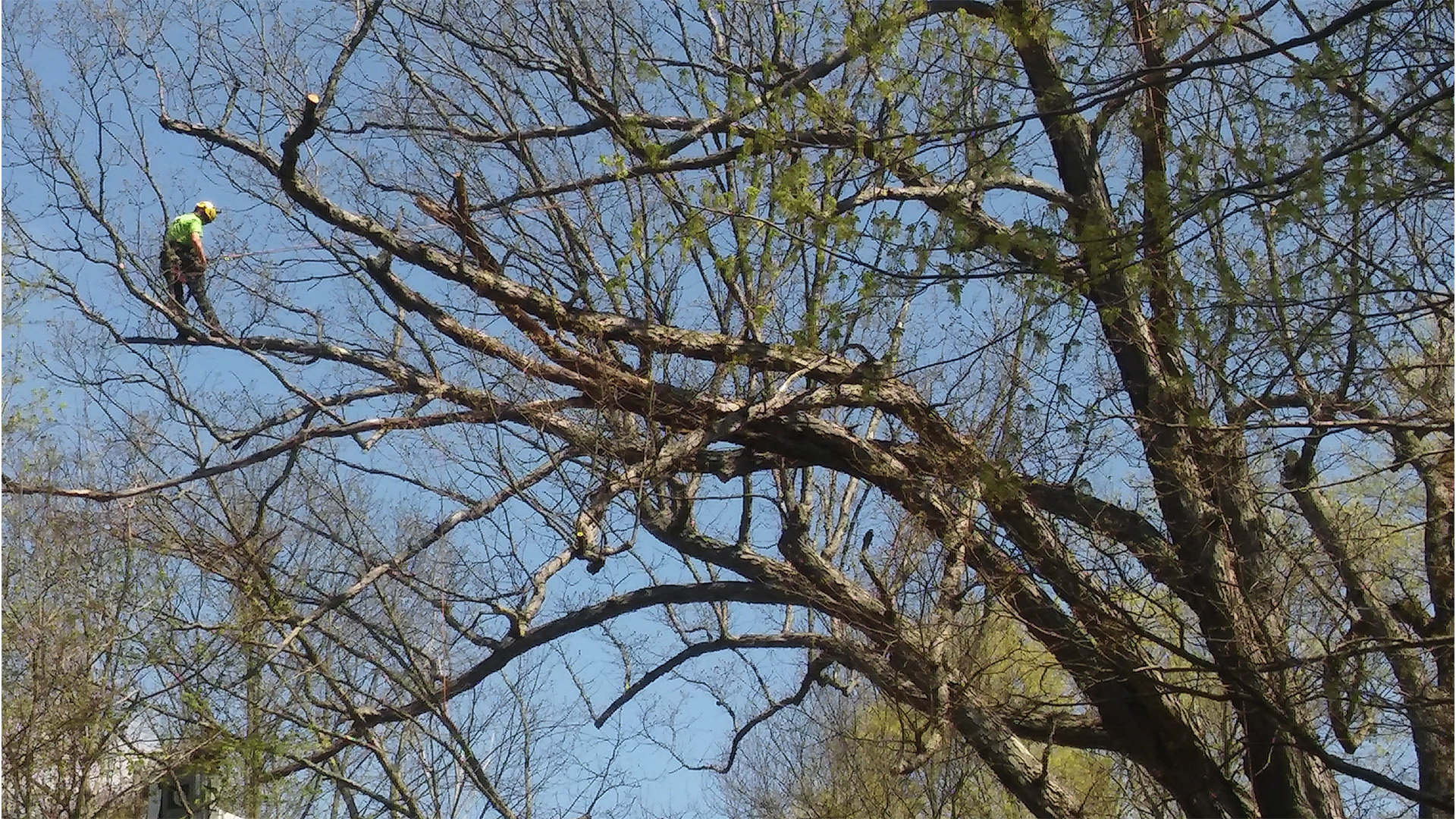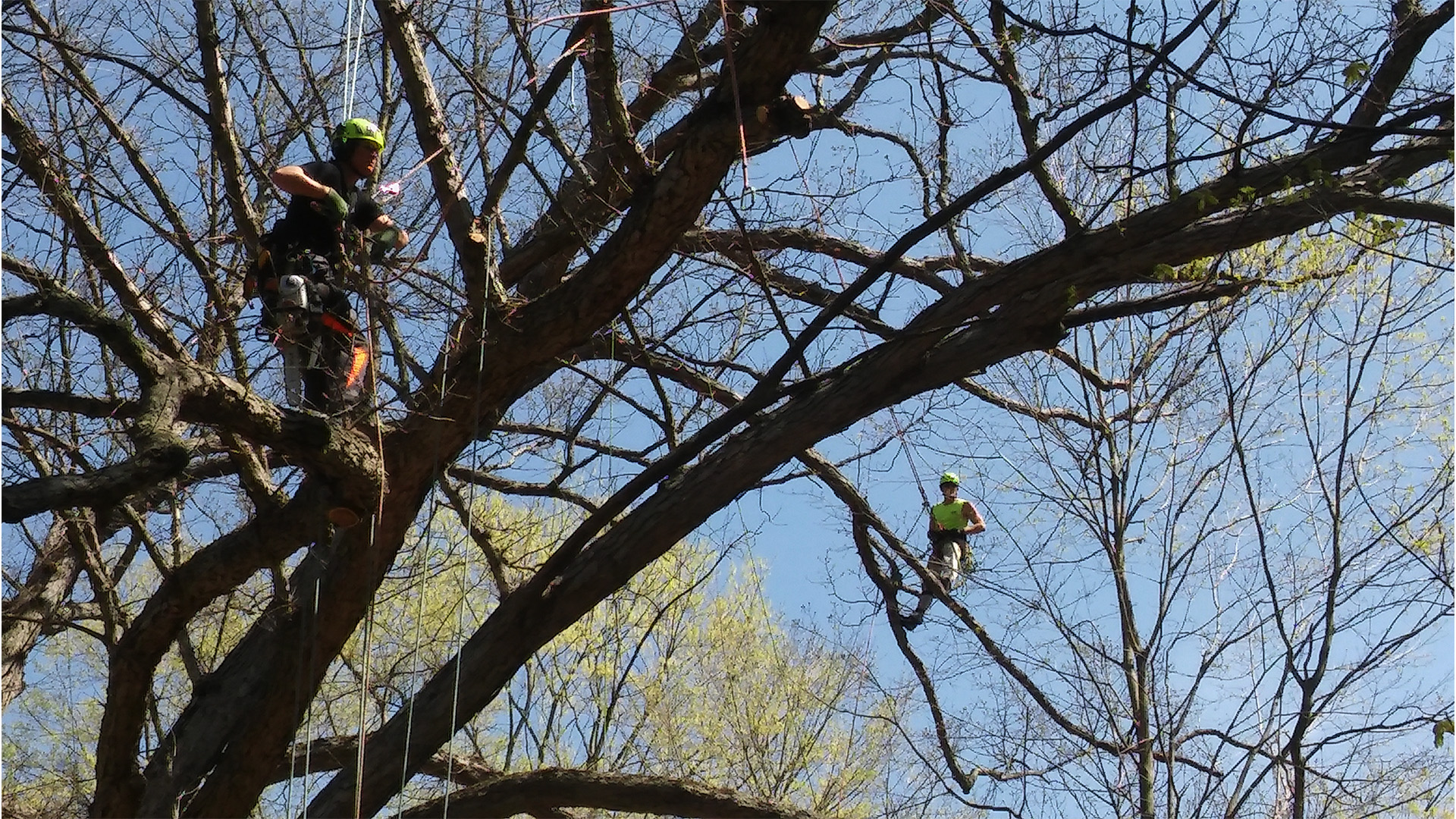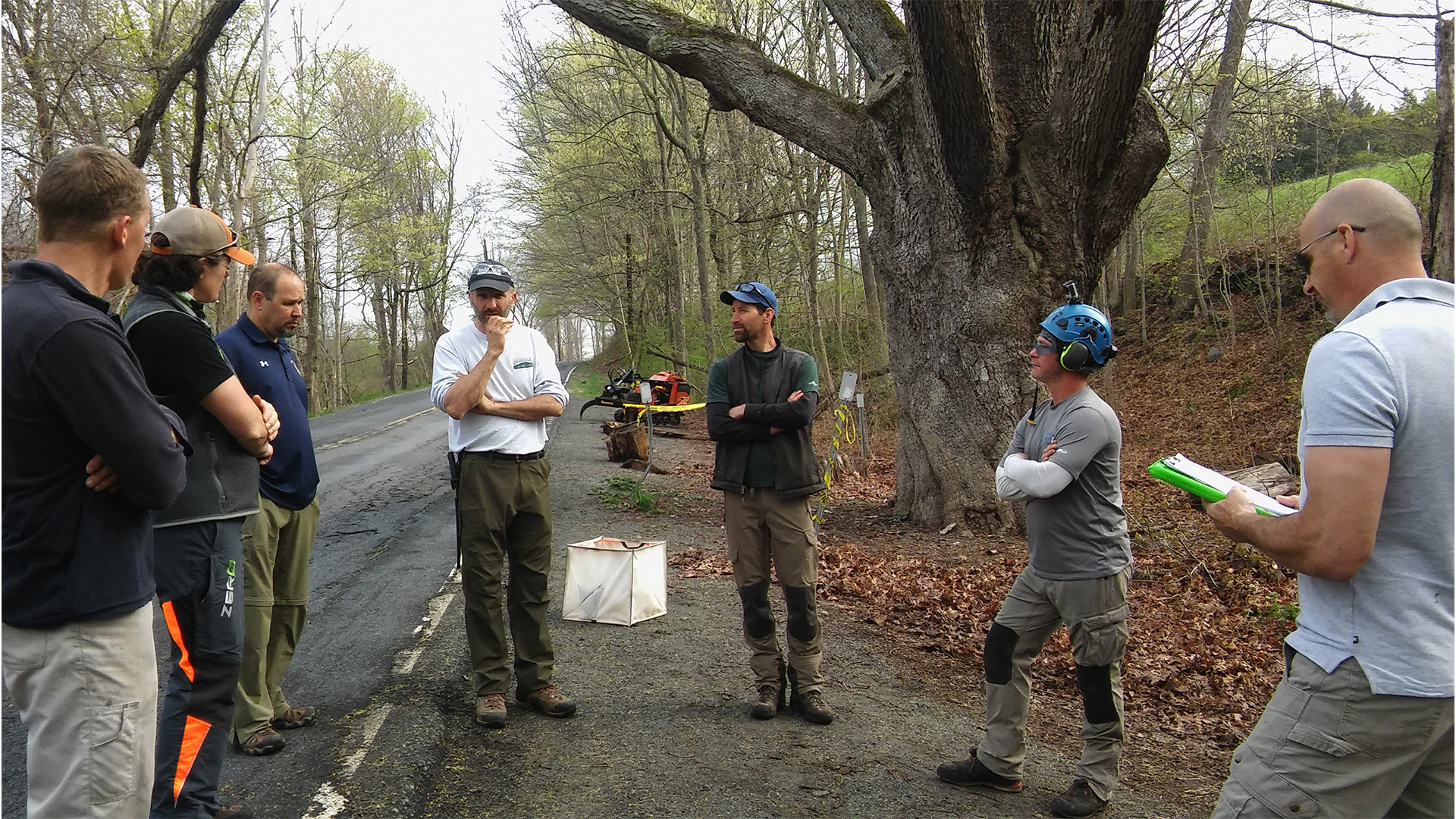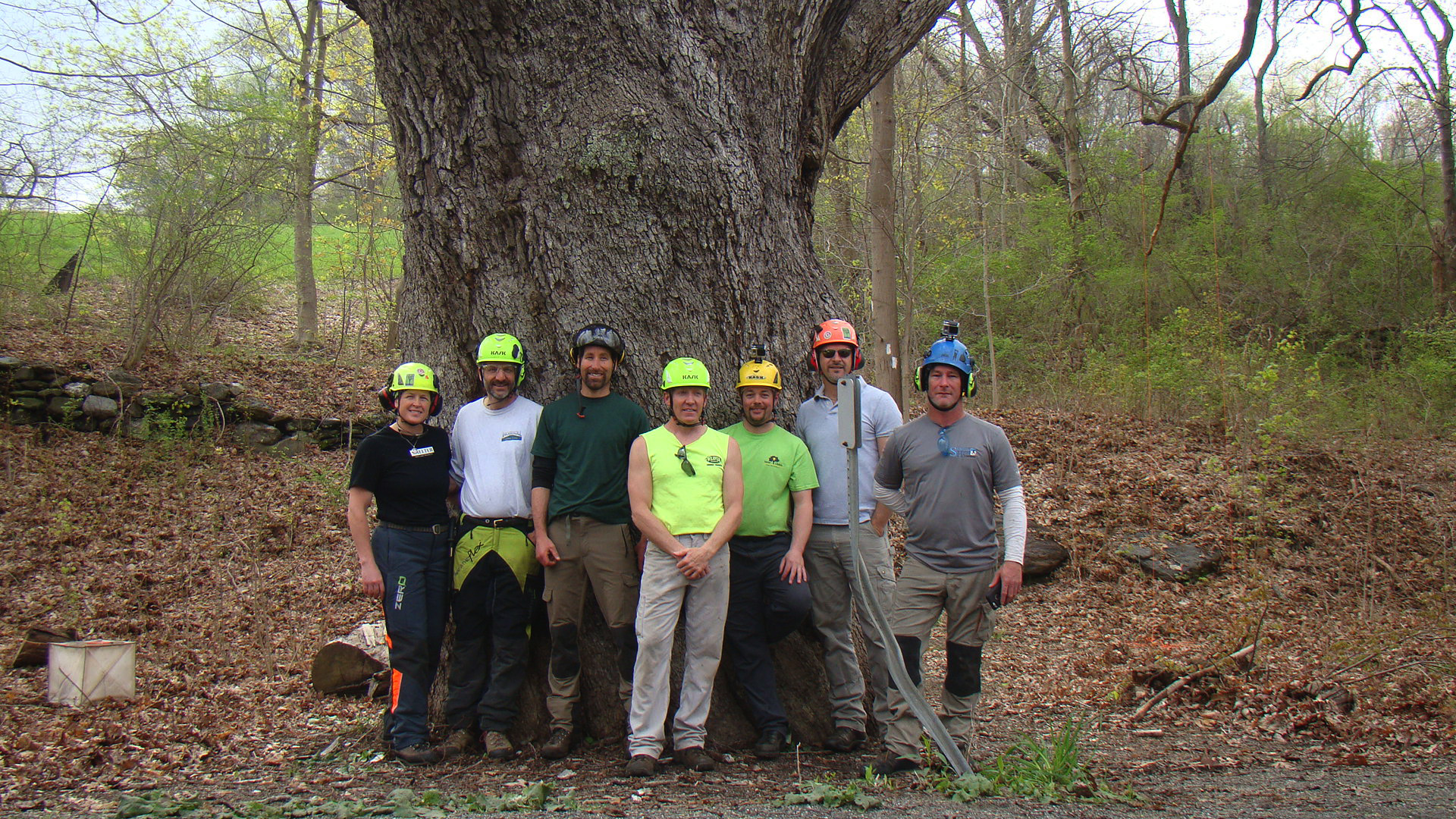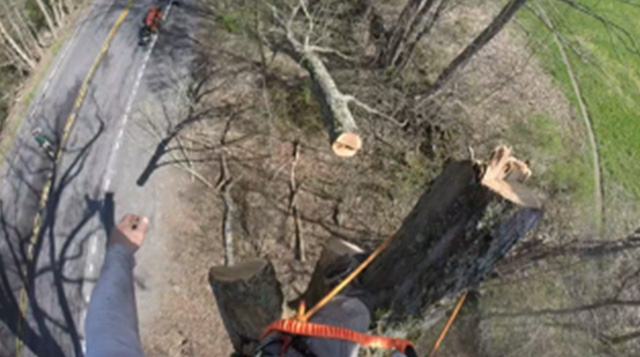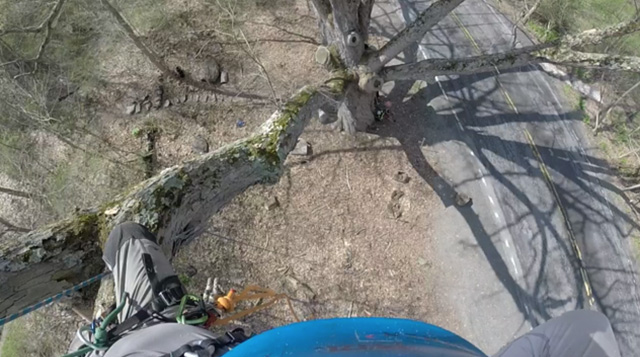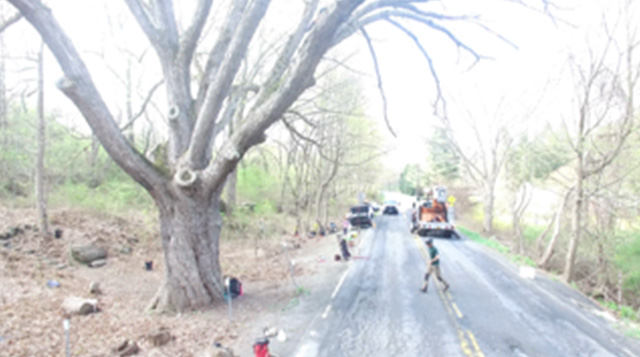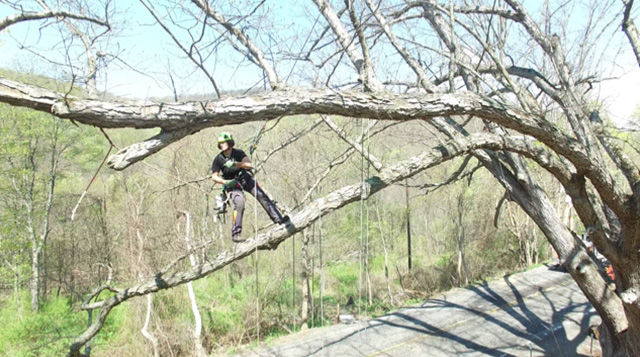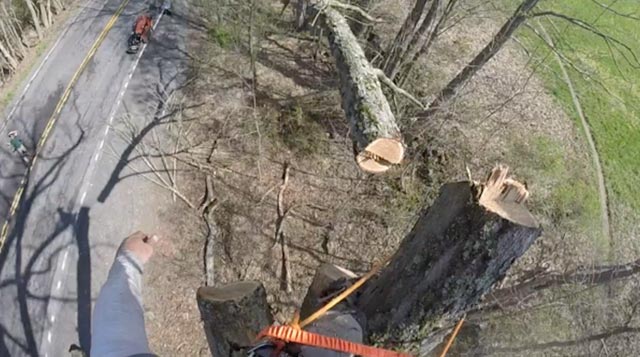

ISA Certified Arborists and Champion Climbers (left to right) Melissa LeVangie, Tom Ingersoll, Luke Soule, Brian Carpenter, Daniel Weise, Jason Bresson, and Russell Plumb
car on the side of West Dover Road near the Appalachian Trail, just a few miles north of the town of Pawling, New York. A number of people were moving around the area with brisk and purposeful strides. As I stepped out of the car and walked toward the others, I was struck by a tangible energy in the air. It was a feeling of exhilaration and excitement that would set the tone for the remainder of the day. As additional vehicles began to arrive, I watched their passengers eagerly going to greet each other with the type of enthusiastic hug or handshake reserved for a good friend you haven’t seen in some time.
It was a white oak tree (Quercus alba) that had brought this group of people together on this particular National Arbor Day, but it wasn’t just any white oak, and the visitors certainly weren’t your typical A.T. visitors. The group was comprised of some of the very best International Society of Arboriculture Certified Arborists and Champion Climbers from the states of New York, Connecticut, and Massachusetts. They had all met here in Pawling to provide a day of service to one of the largest white oak trees in the state of New York, the Dover Oak. Standing at 85 feet in height and 81 inches in diameter, the Dover Oak is a splendor to behold. Its limbs, many of which are outstanding in their own right, stretch in all directions, first aiming skyward and then arching back down toward the ground. It is estimated that the tree is around 250 years old, but its age has long been disputed, and some suspect it is considerably older. We can only speculate as to how and why it came to be that this tree was spared when the area was heavily deforested in the mid to late 1800s.
This strikingly majestic tree is a quintessential photo opportunity for those hiking the A.T.; and as one might imagine, notoriety and age can present a unique set of challenges to such a Trail celebrity. Years of visitors walking and parking over its roots, recent hot and dry summers, and repeated winters accompanied by road salt treatments have all contributed to its decline. In 2016, the Harlem Valley A.T. Community (HVATC) proposed a service project to better protect the tree, a suggestion that set in motion an even greater story of preservation.
Now a team of eight arborists, under the leadership of Tom Ingersoll, were preparing to ascend on the tree in the first stage of this effort. Tom is an old friend of the A.T., contracting with the Appalachian Trail Conservancy (ATC) on habitat restoration projects and often volunteering at the ATC Kellogg Conservation Center in South Egremont, Massachusetts. In this case, he had been our recent advisor on how to better care for the ailing tree, and he had organized this talented group of professionals from across the three states. Now, after months of planning and anticipation, they were all finally here. Their aim for the day would be to trim and remove dead, dying, weakened, and abrading limbs that were needlessly taxing the tree, utilizing limited resources, and providing ideal habitat for harmful pests and pathogens.
As the group assembled near the base of the tree, a semi-truck flew past pushing 60 miles per hour. Though it wasn’t the first truck that had passed us that morning on the narrow and busy county road, it was to be the last. David Kelly, the supervisor of the Town of Pawling and a chair of the HVATC, had arranged for an official road closure through the state, thus alleviating one major challenge of the project.
Tom began to address the group, covering the same check list that had been running through my head all morning. First, he provided a tailgate safety talk, then an emergency evacuation plan followed by a work plan and a climbing plan, finishing up with the designation of responsibilities for the day. After a lengthy walk around the tree that included detailed deliberation around exactly which limbs should be trimmed and by how much, the arborists spilt and began to assemble their safety gear and climbing harnesses. Soon the climbers began throwing ropes, trying to snag the perfect location for a single line or double line rigging. As the tossing of lines proceeded, Tom gathered up everyone’s saws and wiped down each one with hydrogen peroxide. Arborists do this before each work trip to help prevent the spread of diseases and pathogens between trees.
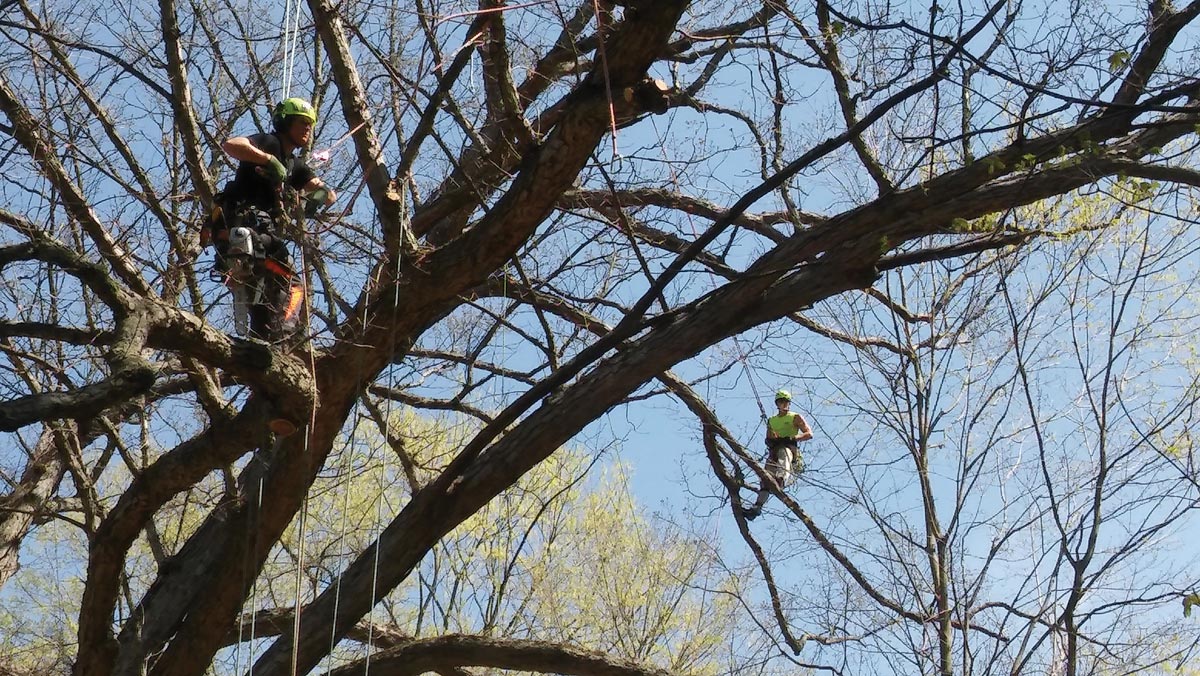
Melissa LeVangie, Brian Carpenter, and Luke Soule make their tricky work look effortless
As each climber determined that their lines were securely situated to their satisfaction, I began to perceive a tiny amount of eagerness coming from the group. The Dover Oak is by no account an average tree, and the opportunity to scale a gentle giant of this magnitude is sometimes a once-in-a-lifetime opportunity. Melissa LeVangie, an award winning champion climber from Massachusetts, compared it to the likes of climbing a giant sequoia. I watched from below as Russell Plumb was the first climber to ascend his line. He zipped quickly up the tree with a mid-air stepping motion that was made look to effortless. Luke Soule, Mellissa, and Dan Weise all flew up their own lines, and just like that there were four nimble climbers adorning the giant limbs of the tree. They moved about the canopy with an ease and a grace that must come from many years of experience, and those of us on the ground were absolutely beaming at the site of them.
For the next six hours, with chainsaws hanging from their hip belts and hand saws strapped to their calves, the arborists climbed throughout the tree dropping dead limbs as they went. Each climber had a counterpart on the ground watching, advising, and assisting as needed. The group operated like a colony of insects, with each member understanding their particular responsibility and how it would support and impact the others. Though each of their movements were undoubtedly made with careful calculation, the climbers worked with a confidence that made it appear as if they were able to act without thinking at all. Watching this group of arborist (who rarely had the opportunity to work together) cooperate so well was an inspiring testament to their skill and expertise.
As the hiking season progresses, work will continue on the oak. Sawing High Climbers will be aerating and mulching the ground around it in order to decompact the soil and provide the tree with much needed nutrients. McEnroe Organic Farm, one of New York’s oldest organic family farms and compost suppliers, has worked with soil ecologists at Cornell University to determine the best soil mixture for the tree. McEnroe also generously offered to donate 20 cubic yards of compost, thus making the project possible in 2017 without further funding delay. Looking into 2018, the partners on this project aim to replenish the native understory beneath the oak and create more intentional foot path and parking placement that will reduce visitor impacts. It is our hope that all of this work will help protect and preserve the Dover Oak for the enjoyment of many generations to come.”
Marian Orlousky is the ATC’s northern resource management coordinator. The ATC would like to extend their most sincere appreciation to the team of arborists and champion climbers from New York, Massachusetts, and Connecticut who volunteered their time and resources to this project. The team included Tom Ingersoll of Ingersoll Land Care, Melissa LeVangie from Shelter Tree Inc., Russell Plumb of Sawing High Climbers, Brian Carpenter from Southbury, Sebastian Slizowski with Green Point Tree and Crane Service, Luke Soule of Soule Tree and Property Management, Jason Bresson from Applewood Tree Care, and Daniel Weise of Weise Choice Tree Services. We would also like to give a special thanks to the town of Pawling and town supervisor, David Kelly, for the instrumental support provided on this project and to the volunteers of the New York – New Jersey Trail Conference — and the Harlem Valley A.T. Community for their unyielding support and sweat on this and many other A.T. projects.
